the Island of Fuerteventura – 2017 (by Gill, October 2024)
My second home as a teenager and where I took my VIPs on holiday.
This is a blog about why I love Fuerteventura so much and a brief look at some of my all-time favourite places.
I’ve been to Fuerteventura more times than I can count on both hands and probably both feet too! My parents bought a timeshare back in 1989 when it was all the rage.
After landing at El Matorral airport just south of the capital city Puerto del Rosario, we would pick up our hire car – usually something small but more than adequate, like an Opel Corsa. We would drive to Caleta de Fuste to the holiday village, check in at reception (which was attached to the bar at that time), drop off our suitcases in our bright and clean, cosy one-bedroom bungalow with patio, and set off back to Puerto del Rosario and the “Hiperdino”.
We always bought lots of large bottles of water. I remember this so vividly. Back in the day it was a real no-no to drink water directly from the tap in the Canaries. You would spend a good few seconds letting the tap run from bright orange to ‘almost clear’ even to wash your hands.
Both my parents would pack a few kitchen and cooking essentials into their suitcase, such as salt, pepper, tea, coffee, sugar, a tea towel, a tin opener, etc, etc. – this is probably what inspired my love of a packing list.
The first time I went to Fuerteventura was in 1991. I was turning 12 years old. Going year after year with my parents in the summer holidays while I was at school, I hung around with other kids from families who holidayed in the same weeks as us. First we holidayed for 1 week, then my parents bought a second week. Having a second week was pretty cool: as I got older and took friends on holiday, we could go for 1 week and have 2 apartments – so consolidating the 2-week holiday in exchange for additional space.
I remember the first time we flew over and landed in Fuerteventura. It was desolate. Dusty. A brown-orange colour all over, interspersed with small oases of green and bursts of colour. There were some rudimentary roads and tracks, old fashioned windmills, and the contrast of the clear blue-turquoise sea with crashing waves, against the white sand dunes and dark beaches dotted between the volcanic rugged coastline.
As you walk down the steps from the plane, the hot, dry air hits you. There is a warm wind. Sometimes a breeze, but mostly a wind. The kind where you knew you would have to hold on to your hat or hold your dress or skirt down from doing a Marilyn Monroe.
Over the years Fuerteventura has changed little by little. From the number of new housing developments and luxury hotels with spas and golf courses, to the creation of an excellent road infrastructure and huge commercial centres, up and down the island. My mum, dad and I would often guess as to how much would have changed and ‘whether that deserted complex or stand-alone structure mid-build had received the funding it needed to complete’.
The only thing that hasn’t changed is my absolute, non-wavering affection for the island. The accessibility of having everything you need within easy reach, alongside still being able to lose yourself on an empty beach or mountain pass is extraordinary.
It surprises me, and sometimes makes me a little sad, to know that I haven’t been here since 2017. I planned an epic 2-week holiday for my dad, my daughter Amy and my husband Luke – where in the 2nd week, we were joined by his daughter Chanae, who stayed with us in our bungalow, and Luke’s parents, who stayed in a nearby hotel for ease (and dinner, bed & breakfast).
I have never stayed anywhere other than Castillo Beach Club, in Caleta de Fuste. Mostly because of the convenience of the timeshare – my dad always had weeks to use up. For me it was a cost-effective way to holiday – paying my dad to use the bungalow, then flights, maybe a hire car or moped, and as much or as little spending money as wanted or needed (or able!)
It’s always felt safe. Like going home.
where to go, what to see, and what to do on your holiday in Fuerteventura
Betancuria
The historical capital of the island. Located in the mid-west, quite secluded. To me, this is one of the most beautiful locations on the island. It’s a quiet, clean, colonial town with a pretty, grand church (Santa Maria de la Concepcion), white buildings and stunning scenery with pops of colour.
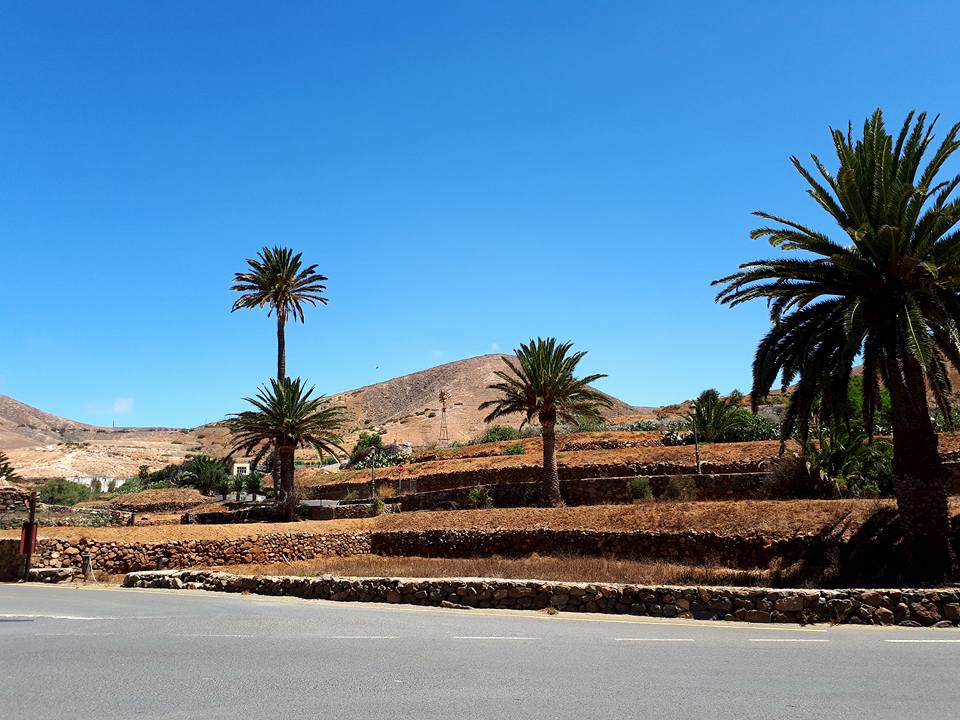
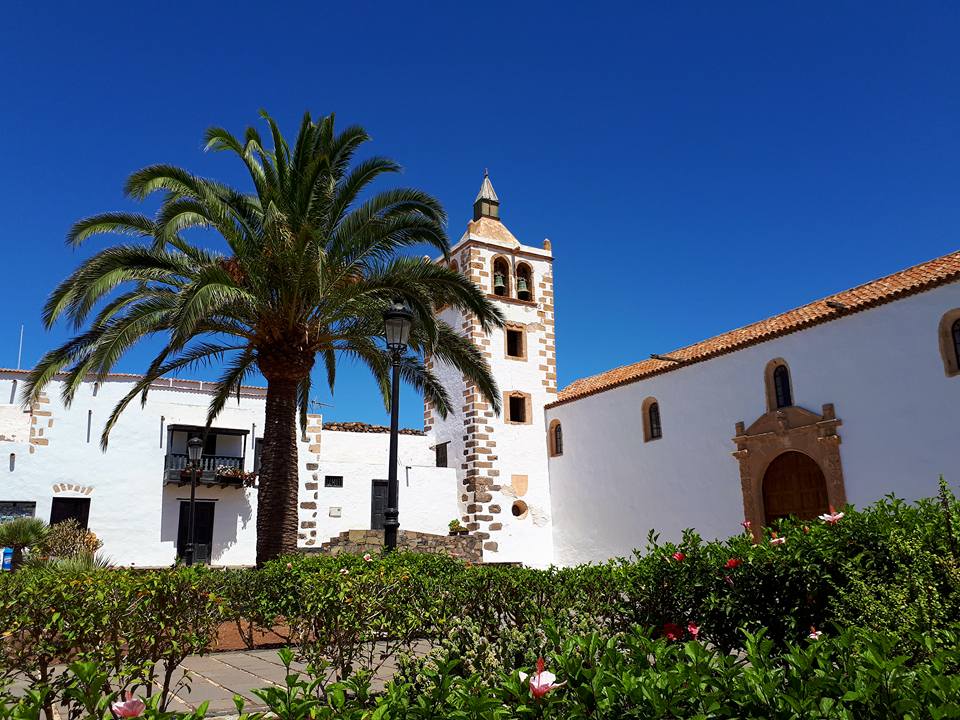
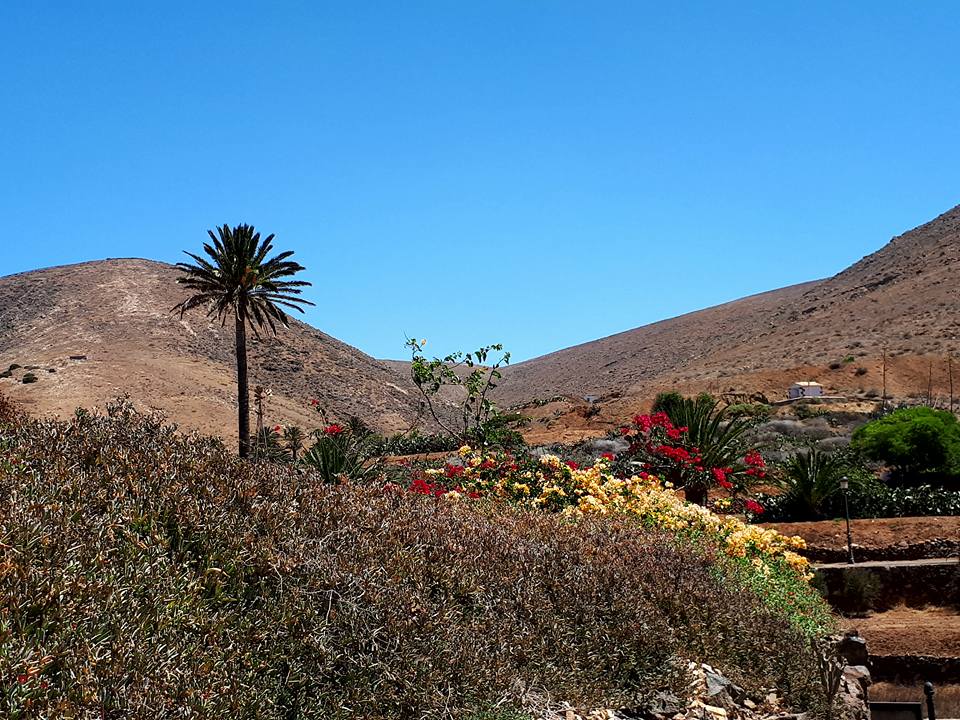
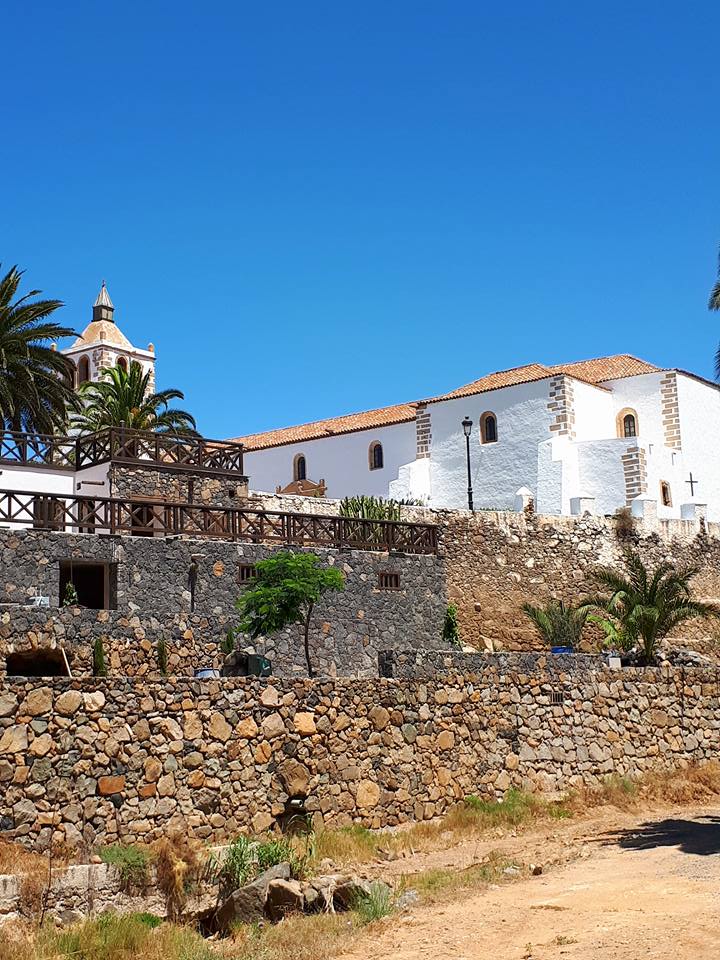
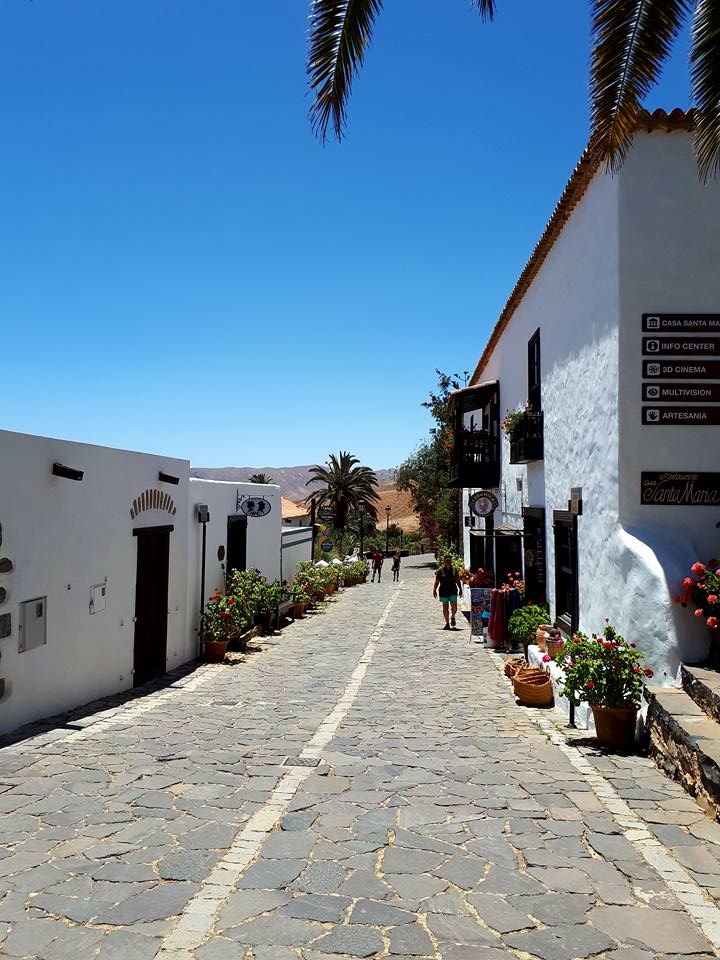
Pajara
We had a “pit-stop” here for ice cream and a café con leche during a road trip around the south. Pajara is a small inland town as well as the name of the most southerly municipality in Fuerteventura. The town is the second oldest on the island (after Betancuria).
There is a town square, and a traditional church (Iglesia de Nuestra Senora de Regla). A dry riverbed (at least, I’ve only ever seen it when it’s been dry), small gardens, local bars and cafes.
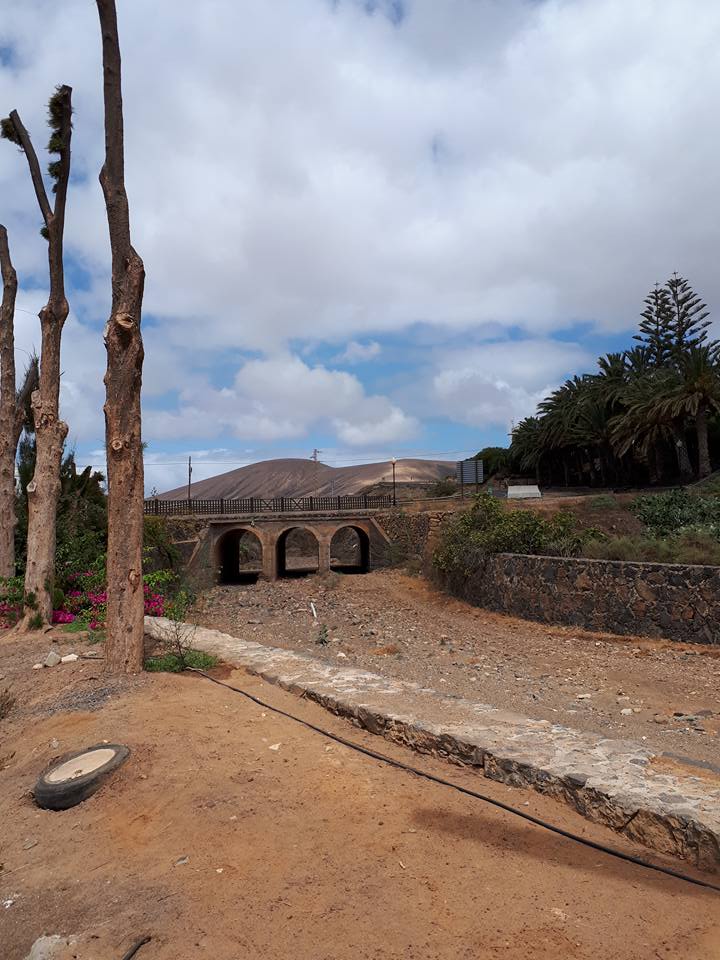
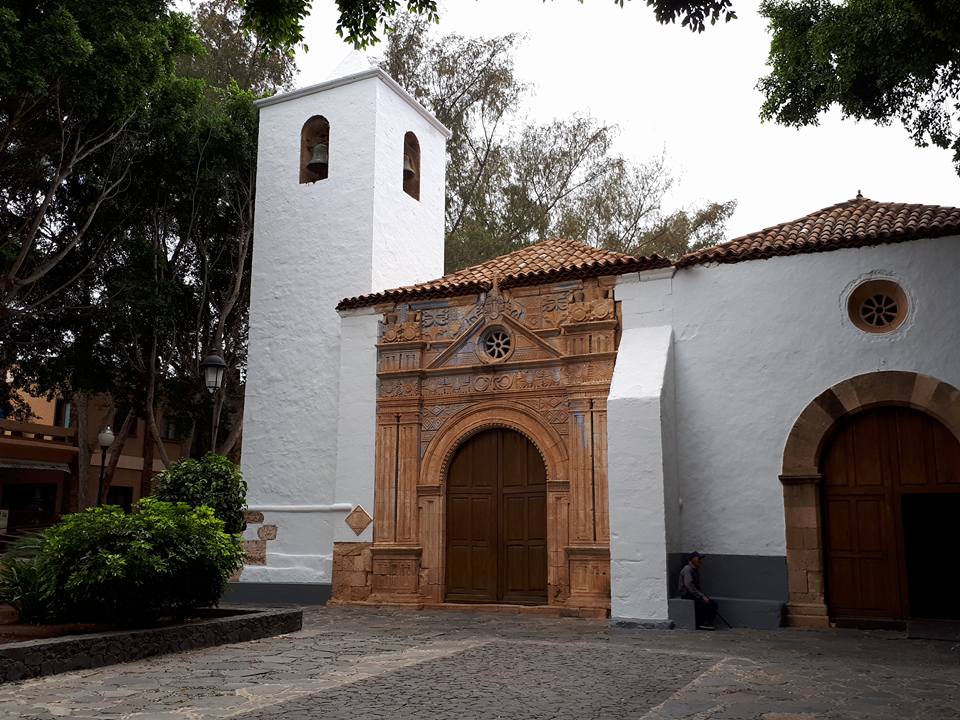
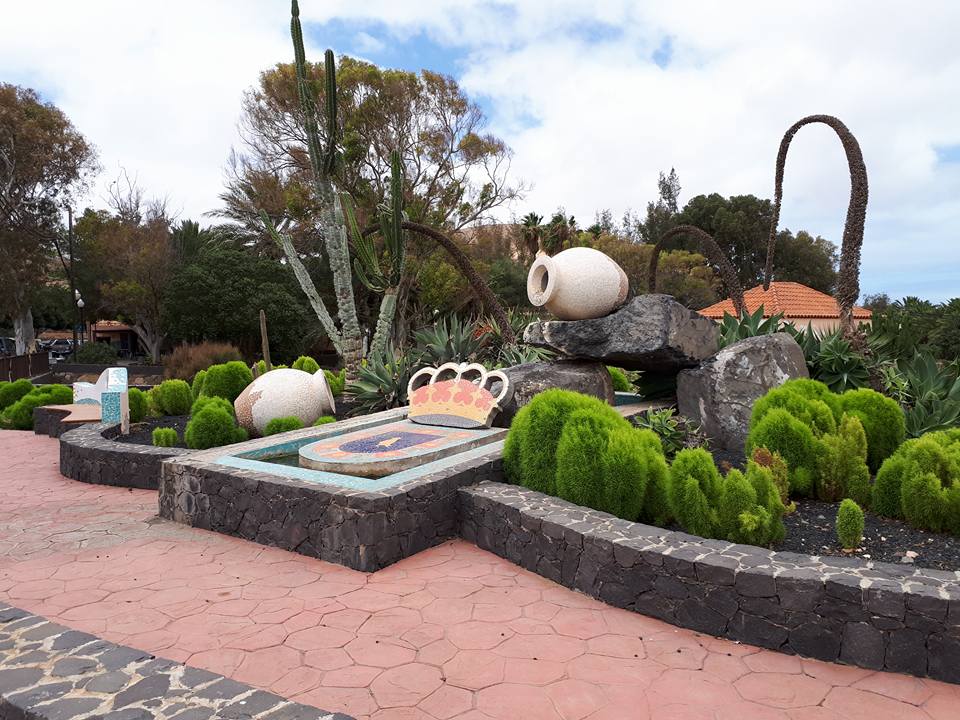
Morro Velosa Viewpoint
Probably one of the most breath-taking sights (alongside the statues below). It feels other worldly when you’re here. In the centre of the island, at this UNESCO Biosphere Reserve, you’ll see an endless view of the undulating landscape. There is a look-out building (This must have been closed when we went, as I don’t recall going in), which you can walk around and take in the 360° views from the terraces.
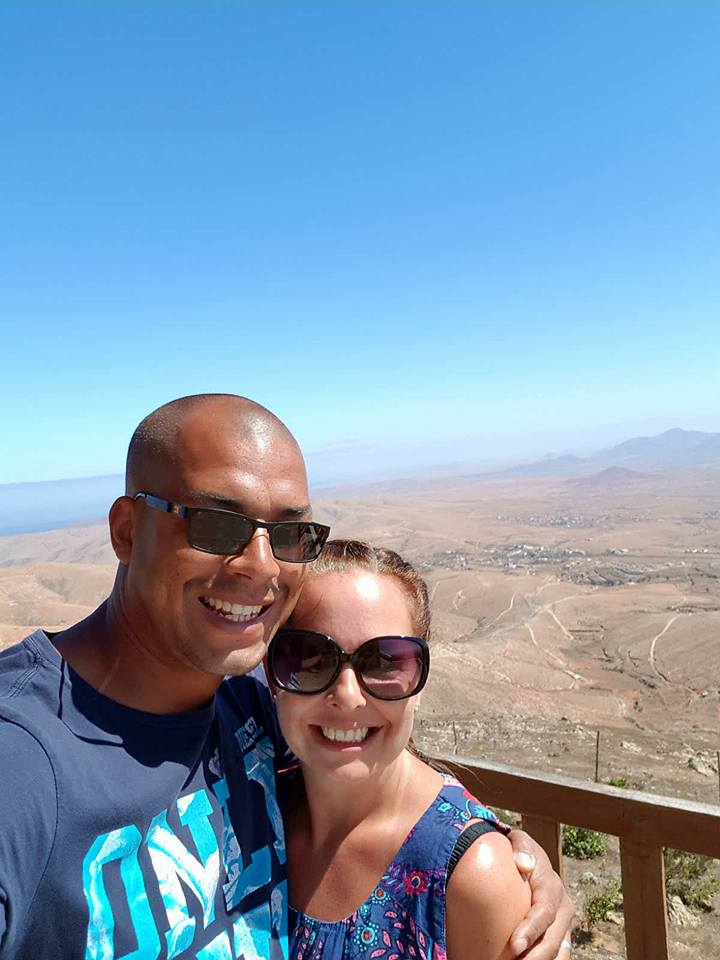
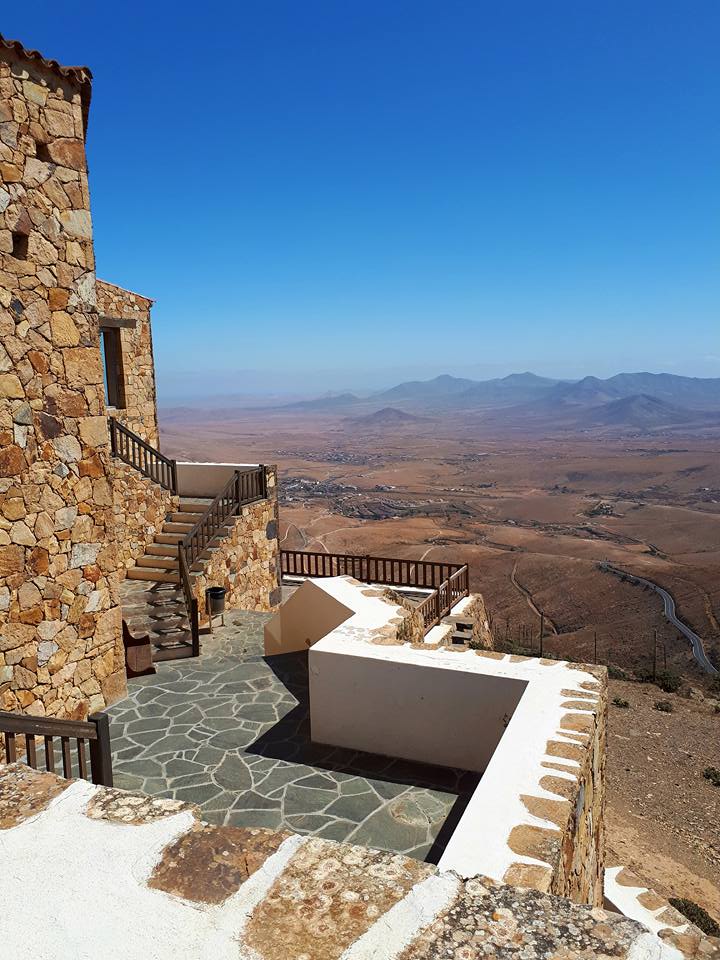
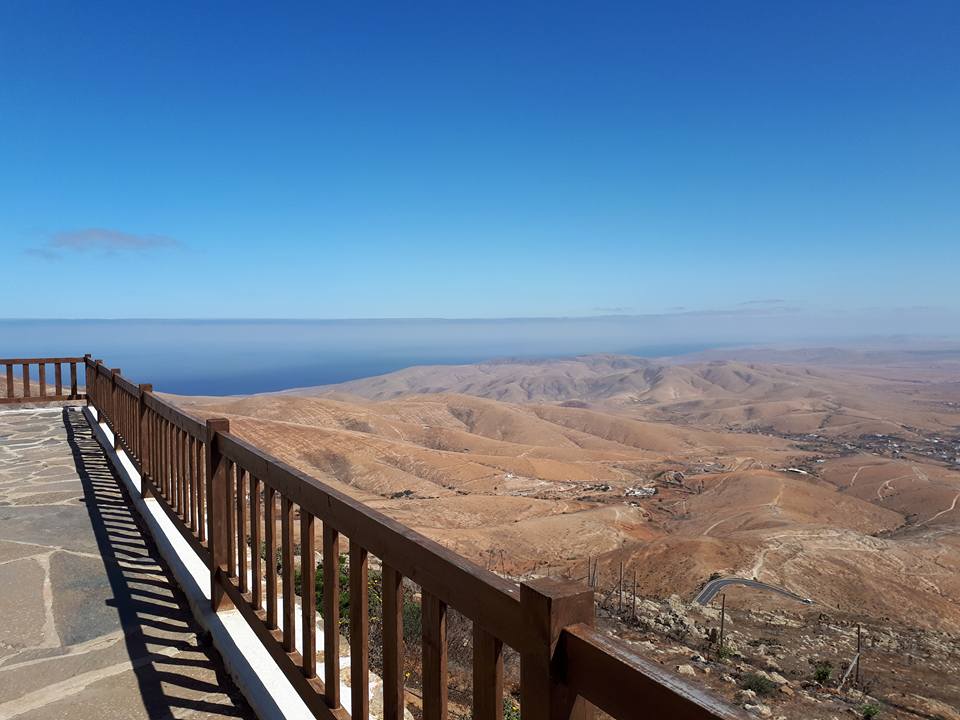
Guise y Ayose Viewpoint
Next door to Morro Velosa viewpoint, you can see these 2 giant bronze statues at the top of the FV-30 mountain pass.
This statue is in memory of the conquest of Fuerteventura which took place in the 15th century. In 1405, faced with an invading army of much superior size and capability, Ayoze and Guise accepted the invading King Béthencourt (hence, the name of the historic capital, Betancuria).
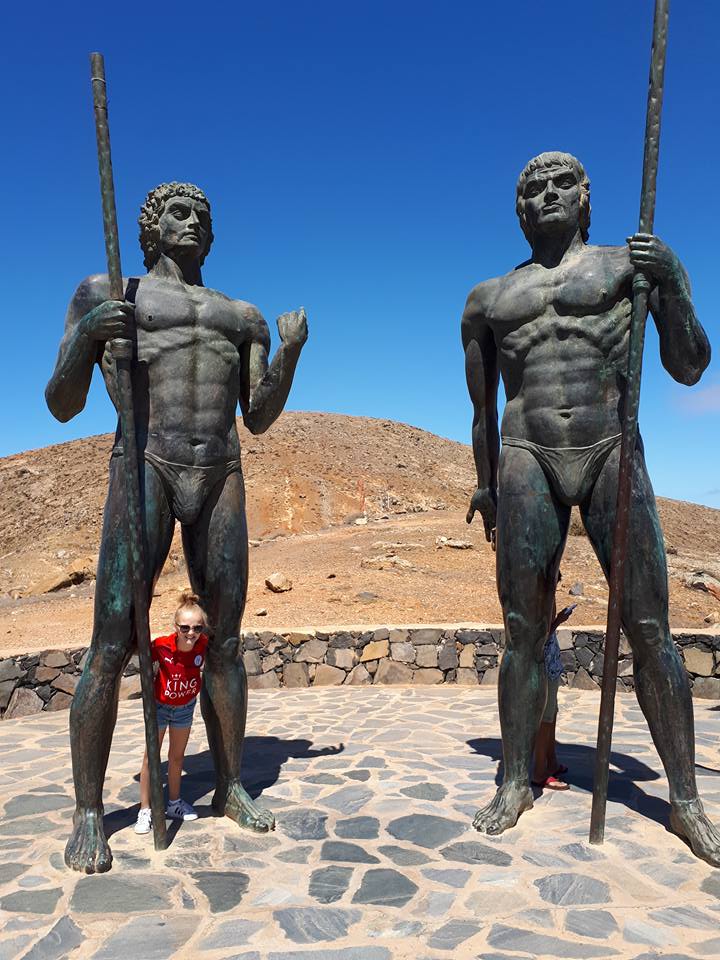
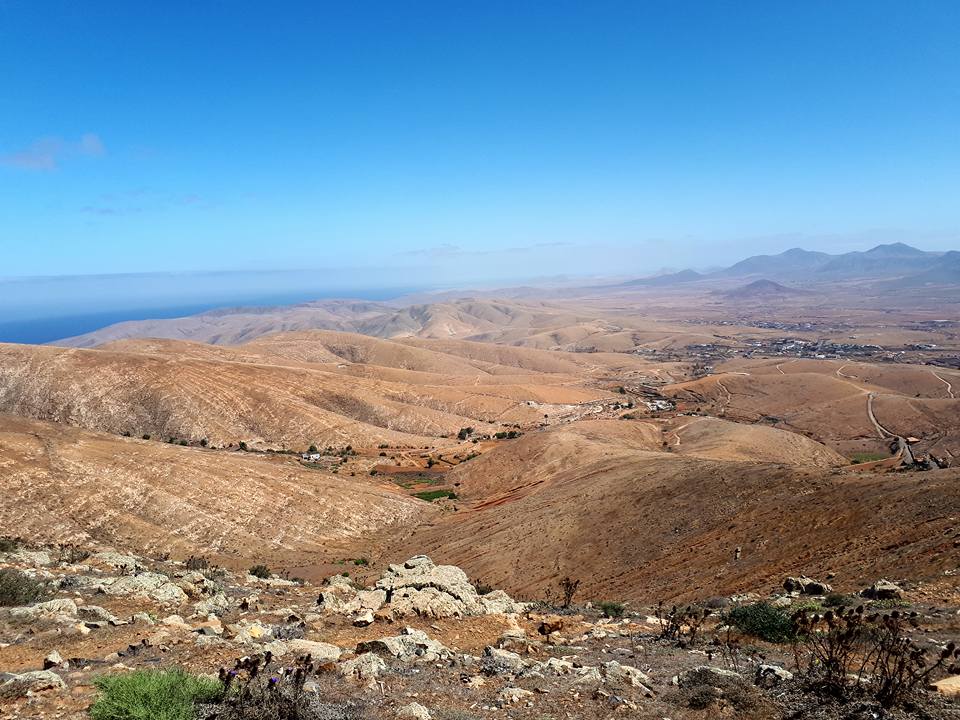
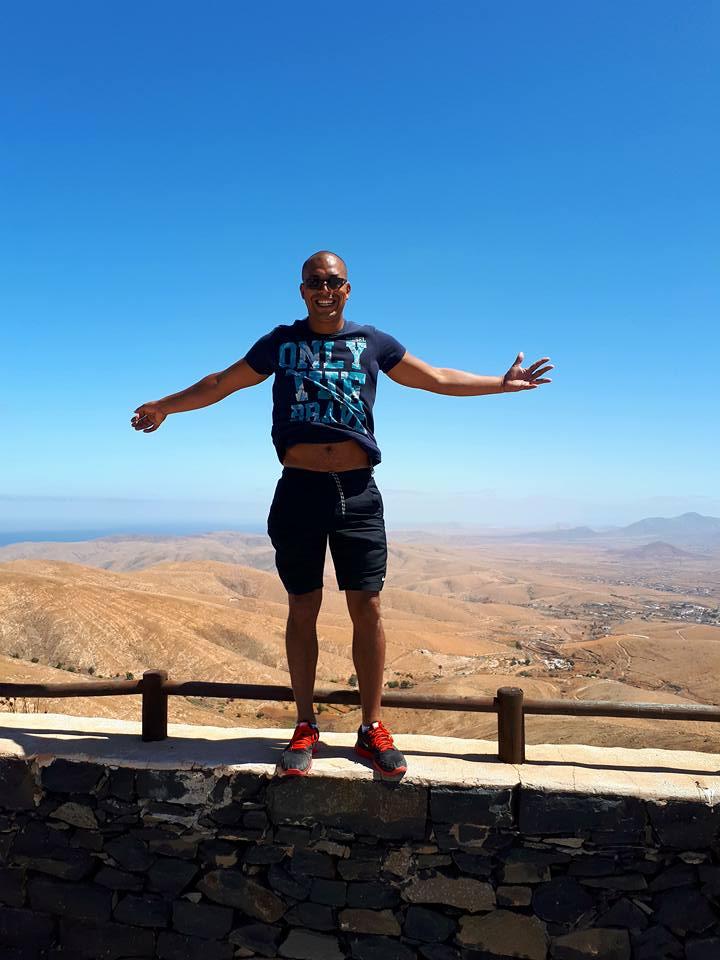
Las Penitas Viewpoint & the Ermita de la Pena Trail
To get here, you continue along a rather scary stretch of the FV-30 mountain pass (depending on who’s driving!) You wouldn’t necessarily need to spend too long at the top, but the view from here is fantastic and quite different from the previous viewpoints. From the top you can see an oasis. There is an underground river that flows through a ravine where there is a man-made dam which creates a small lake dotted with native plants.
From here we drove down to the neighbouring town of Vega de Rio Palmas, parked in a lay-by, and took the signed SL-FV-27 footpath which passes over the dam, and continued walking down the ravine to the little Ermita.
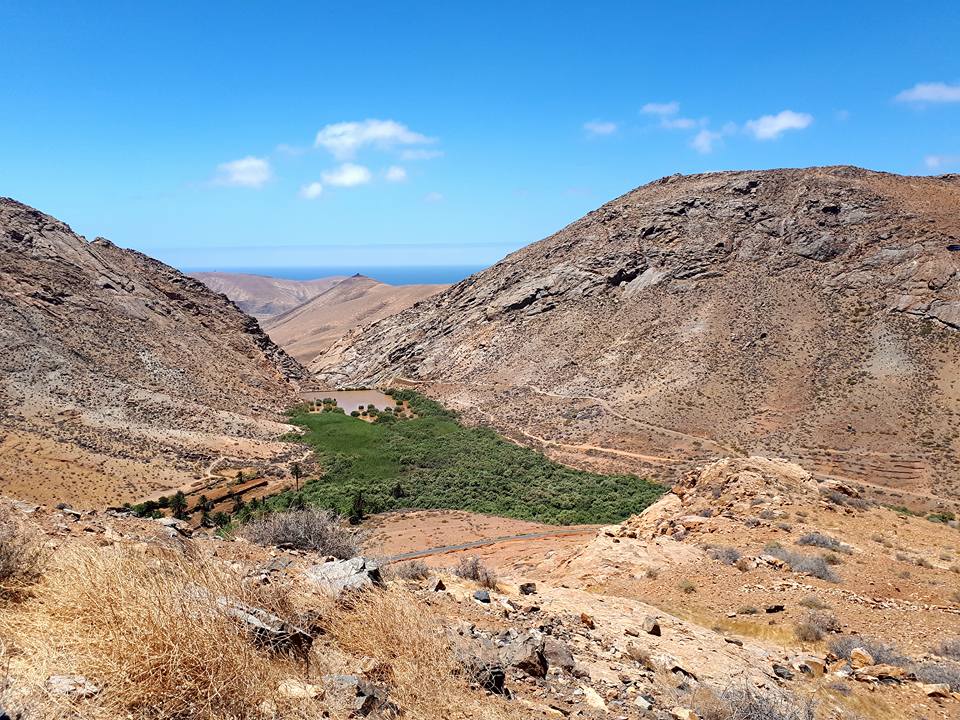
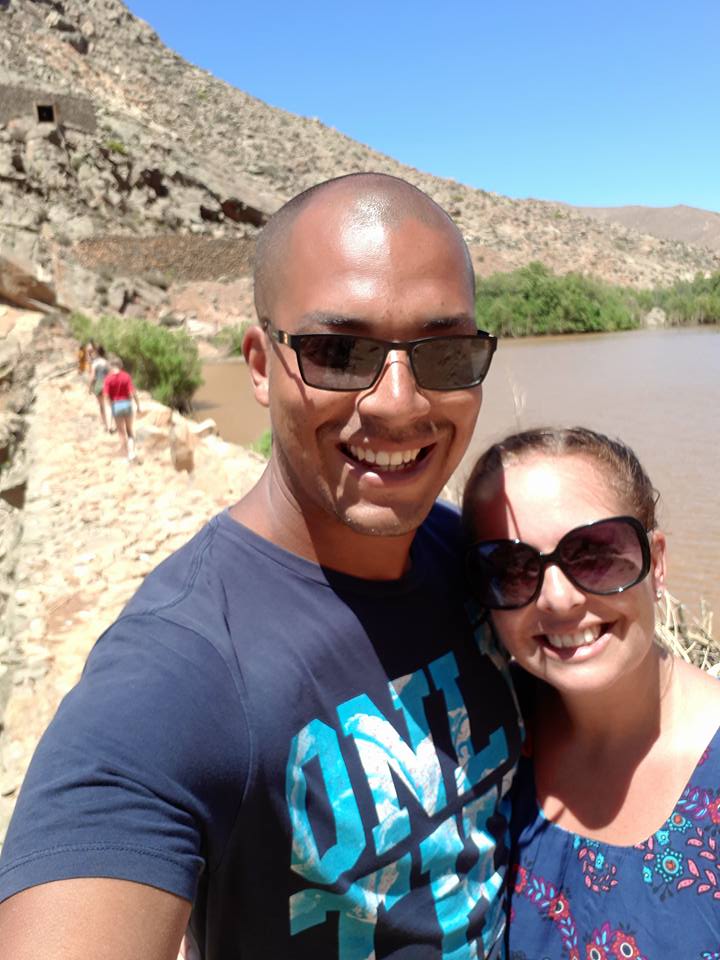
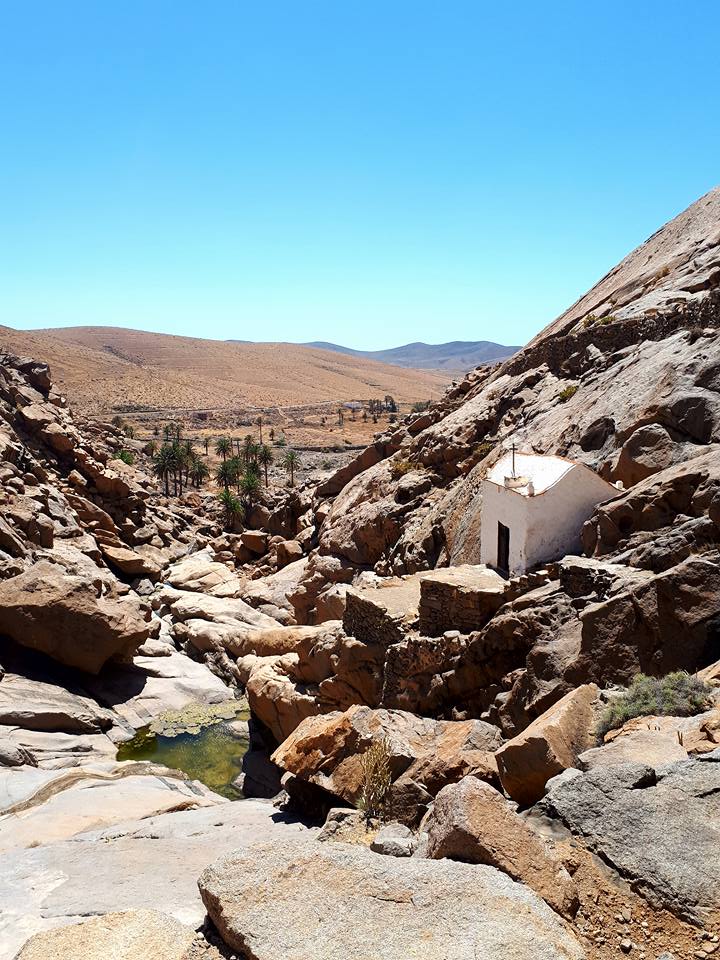
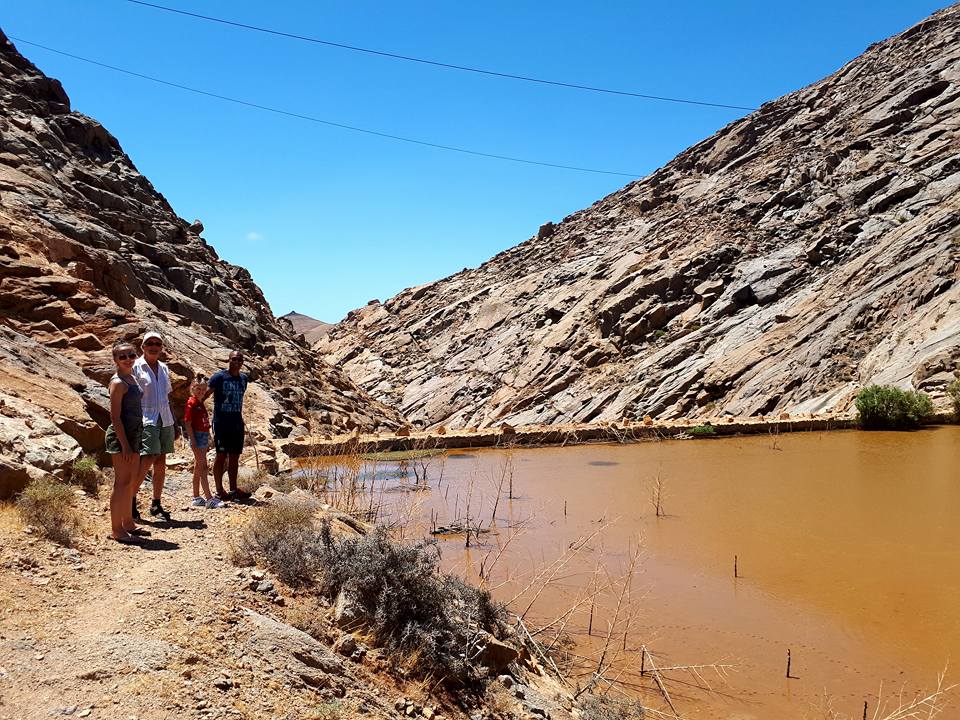
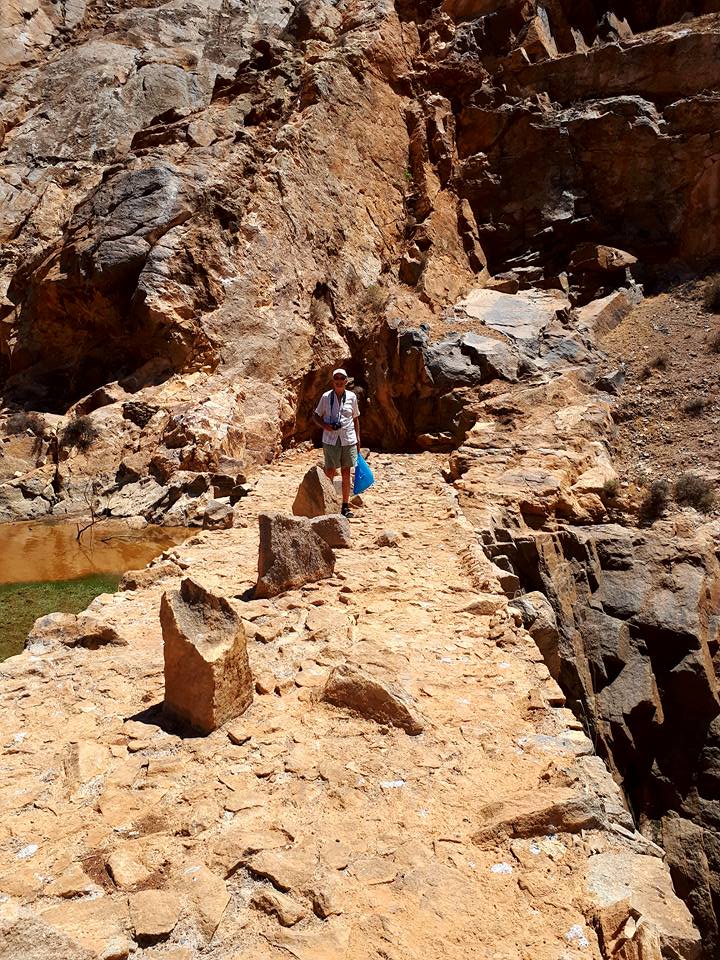

Sicasumbre Viewpoint & Observation Deck
This viewpoint is located in a protected natural area and UNESCO Starlight Reserve in the south of the island, near Pajara, off the FV-605. There is space to park, and information notices are dotted around area to help you acclimatise to the area (and the sky at night). You do have a bit of a walk to reach the top, but there are places to rest once you’re there.
During the day, you get to see the incredible views over the interior landscape – the multicoloured browns, reds and oranges out across the deserted mountains. At night, you may be able to see various constellations and the milky way.
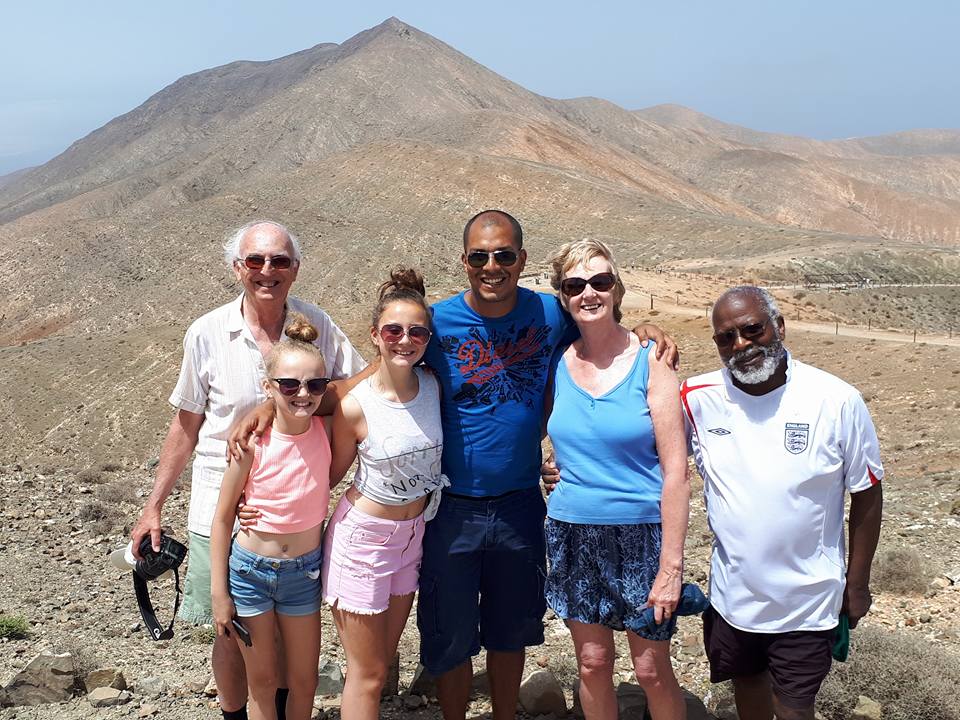
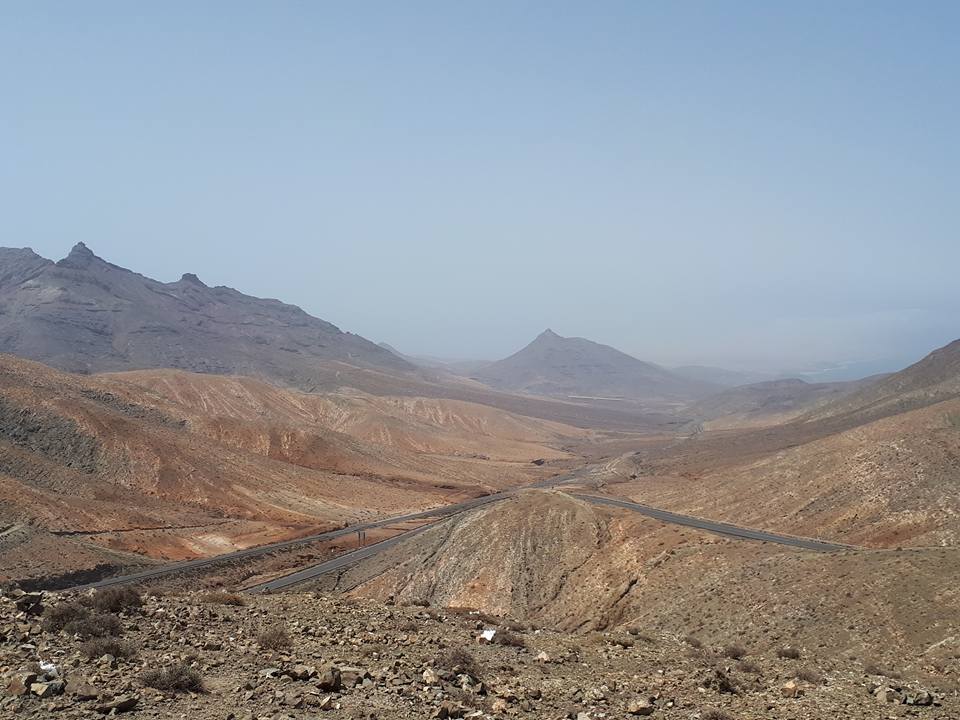
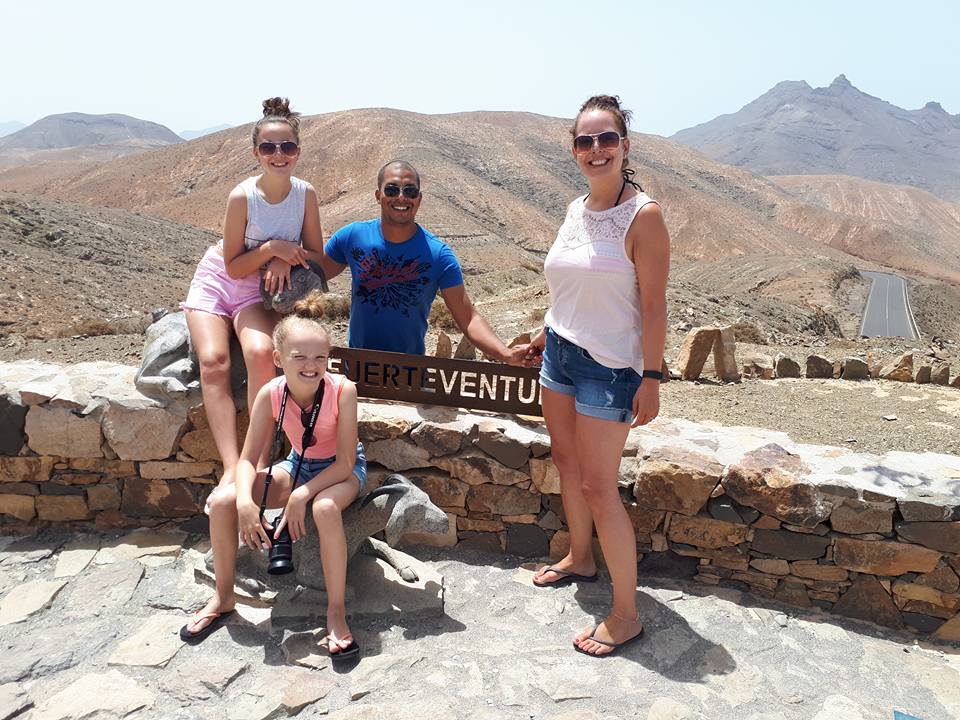
La Pared
Named after a wall that dissected the island in two. Here there are rugged cliffs (natural stone, from volcanic activity), and a mix of black & golden sand.
La Pared is located in the south west of the island. We spent a while here exploring the cliffs and rock formations, and Luke did a spot of fishing too.
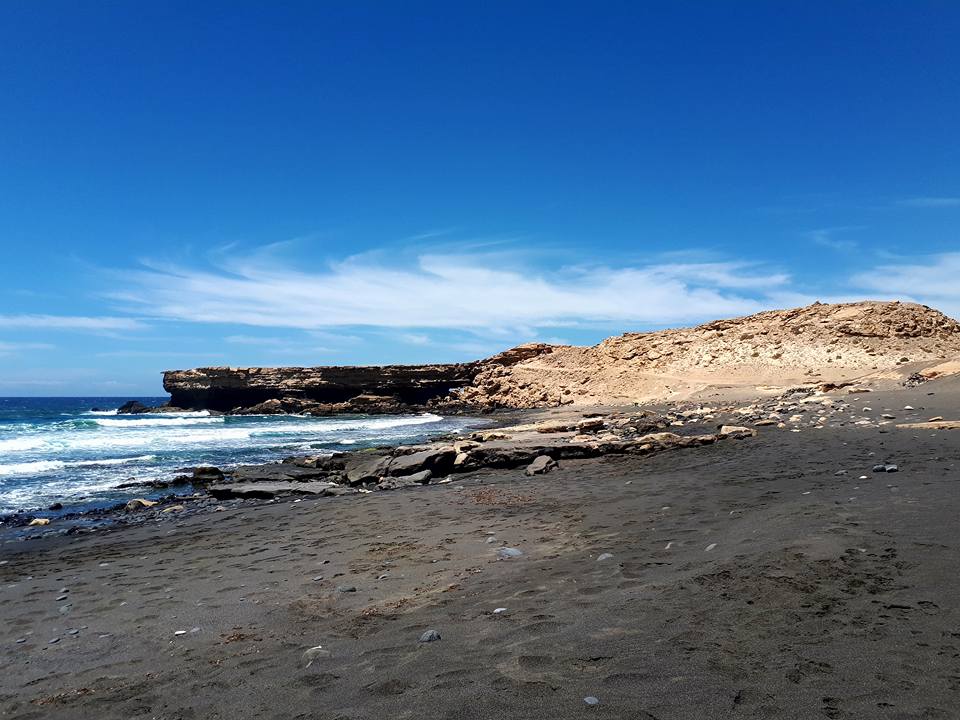
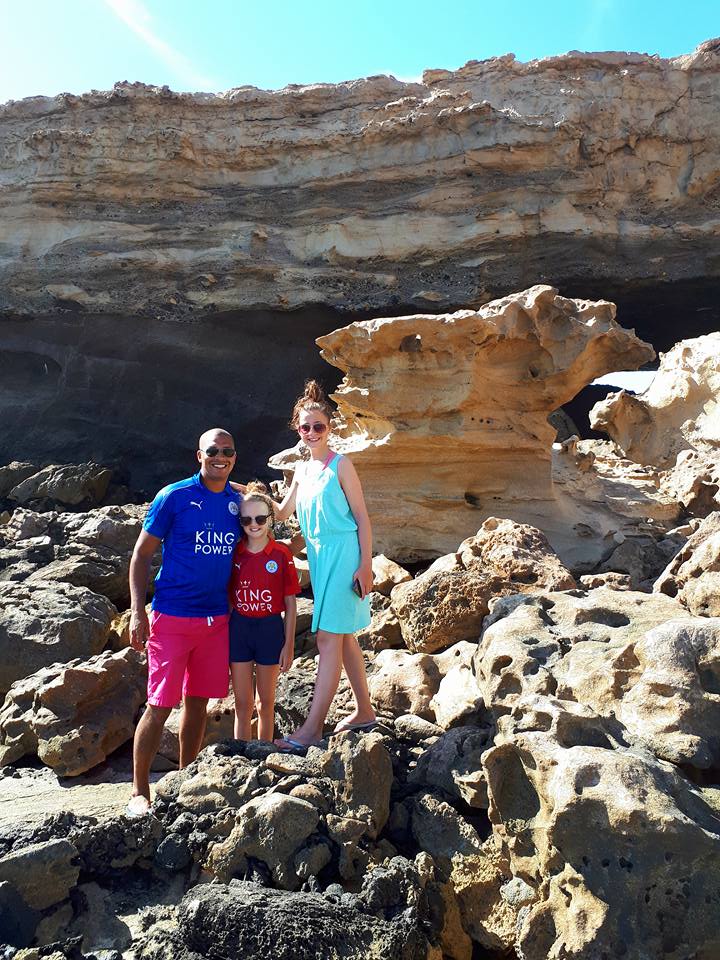
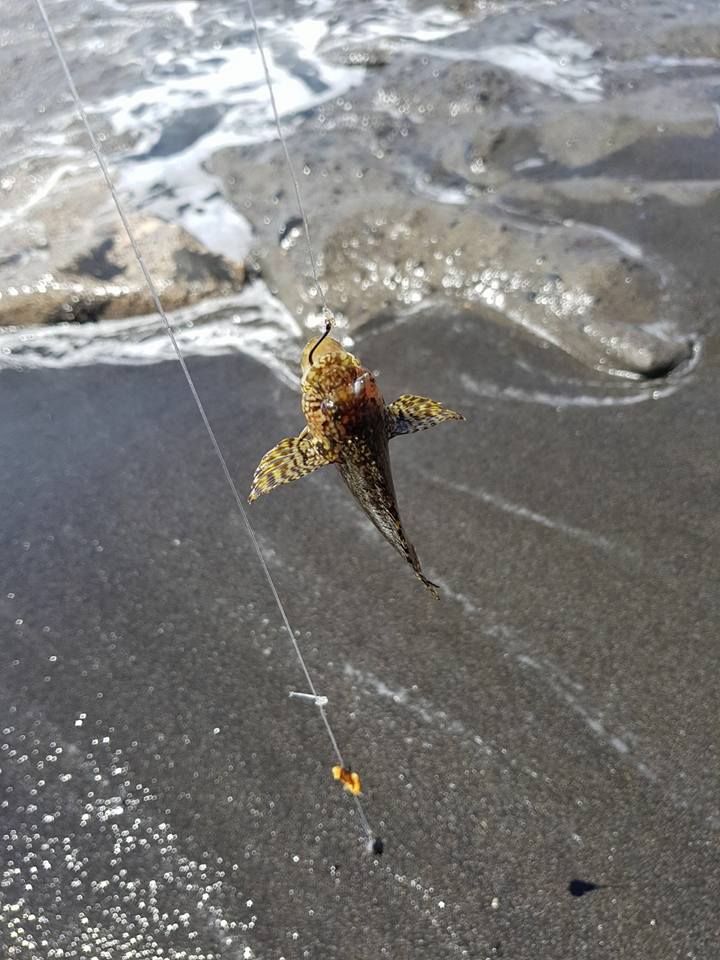
Pozo Negro
A small, quiet, unspoilt fishing village with white houses, a dark beach and volcanic stone. It feels instantly relaxing here. A bit like a land that time forgot. As the beach is stoney I guess not many people choose to come here – which is a massive draw for me! Pozo Negro is on the east of the island, at the end of a lava flow.
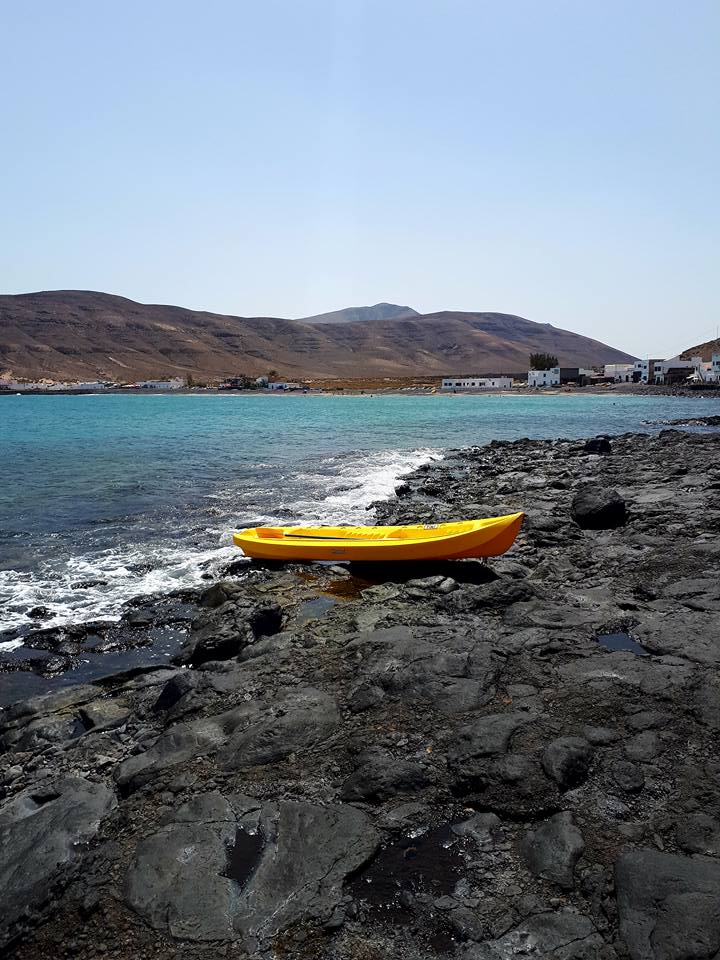
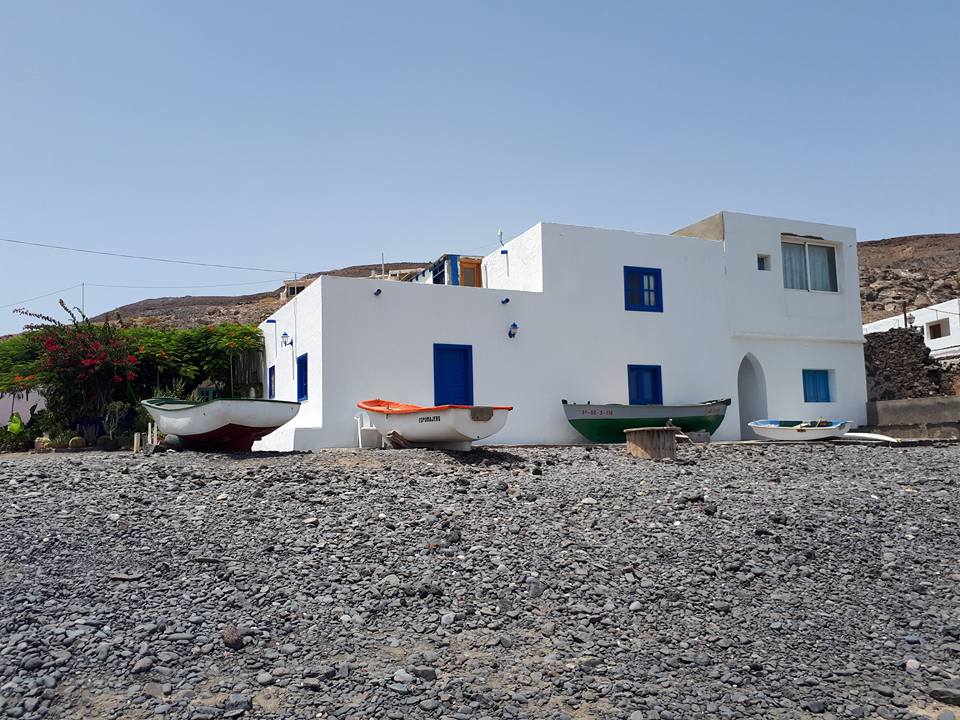
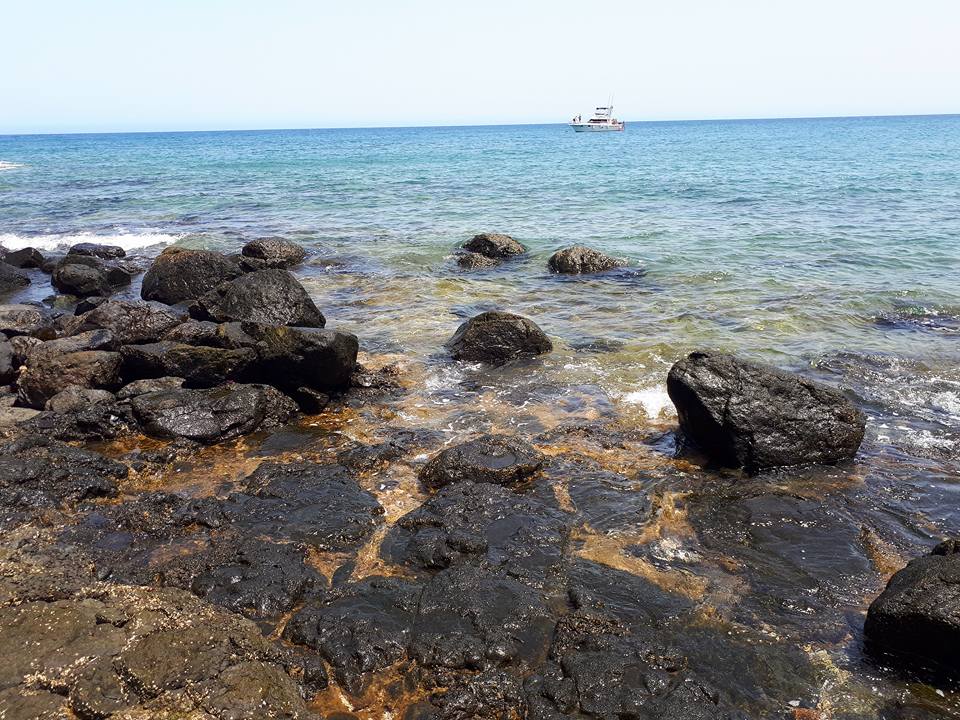
Ajuy & Caleta Negra
A bit more of a tourist spot compared to Pozo Negro. Ajuy is located on the west coast of the island, close to Pajara. You can wander along the volcanic rock and into the caves. Caleta Negra offers stunning views of towering cliffs, crystal clear waters and dramatic rock formations.
Some of the best fish restaurants can be found here – they do get busy during peak season, but well worth the wait for a table (and there’s not too bad a view while waiting!)
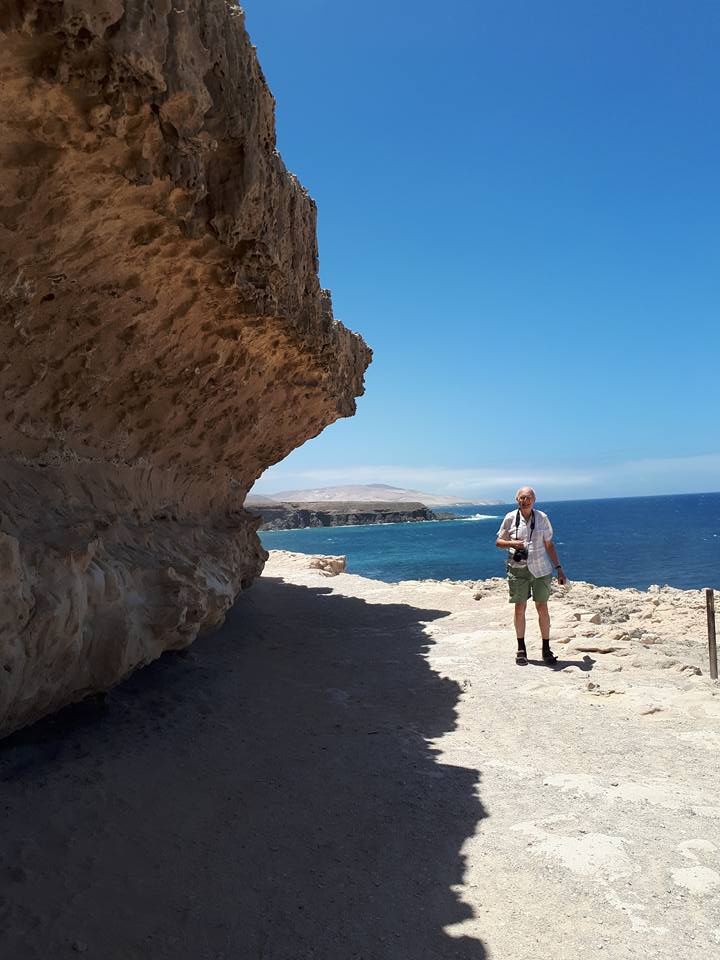
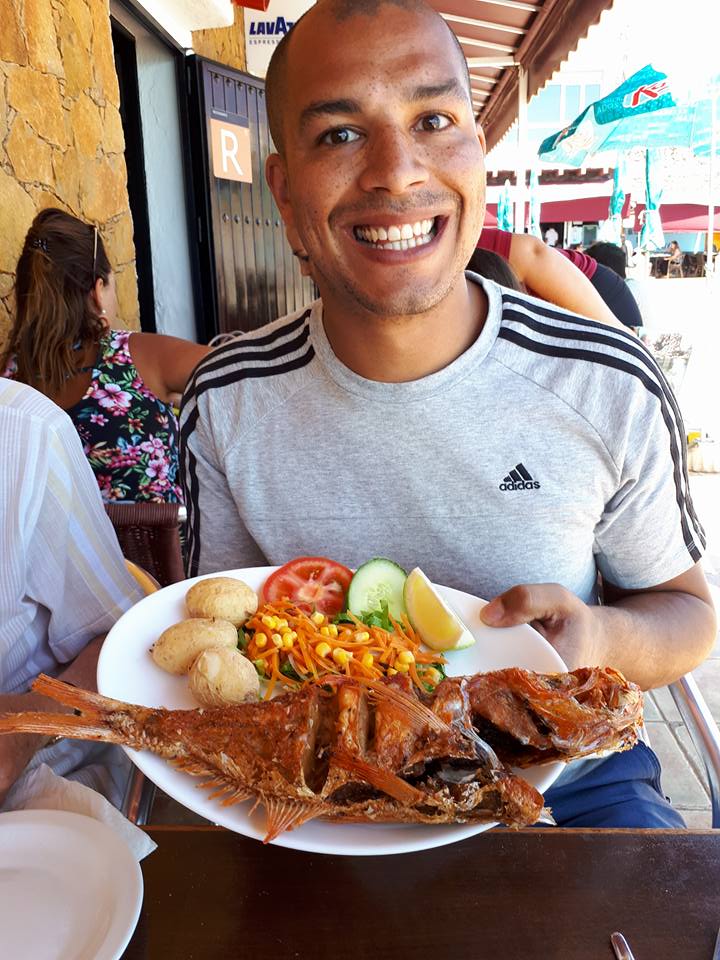
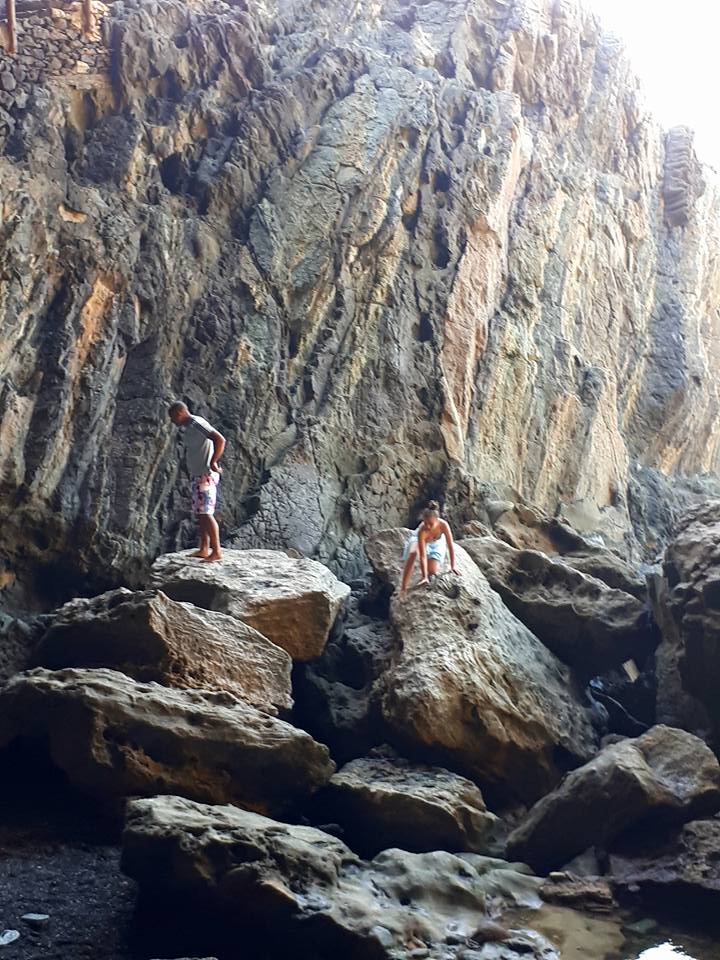
Faro de Toston, El Cotillo
The Toston Lighthouse is in the north west of the island. It is one of three important lighthouses in the Bocaina Strait. The first guide tower and main building was built in 1897, the second in 1955 and the third in 1986. There is the Museum of Traditional Fishing in the main building – but it’s not open very often.
We moseyed around on the uneven ground here for ages, watching the waves crashing against the rocks and investigating the ‘pools’ of salt left behind where rock pools had dried out. There is a washed-up shipwreck here too… who knows whether this was from before, or since the lighthouse was built!
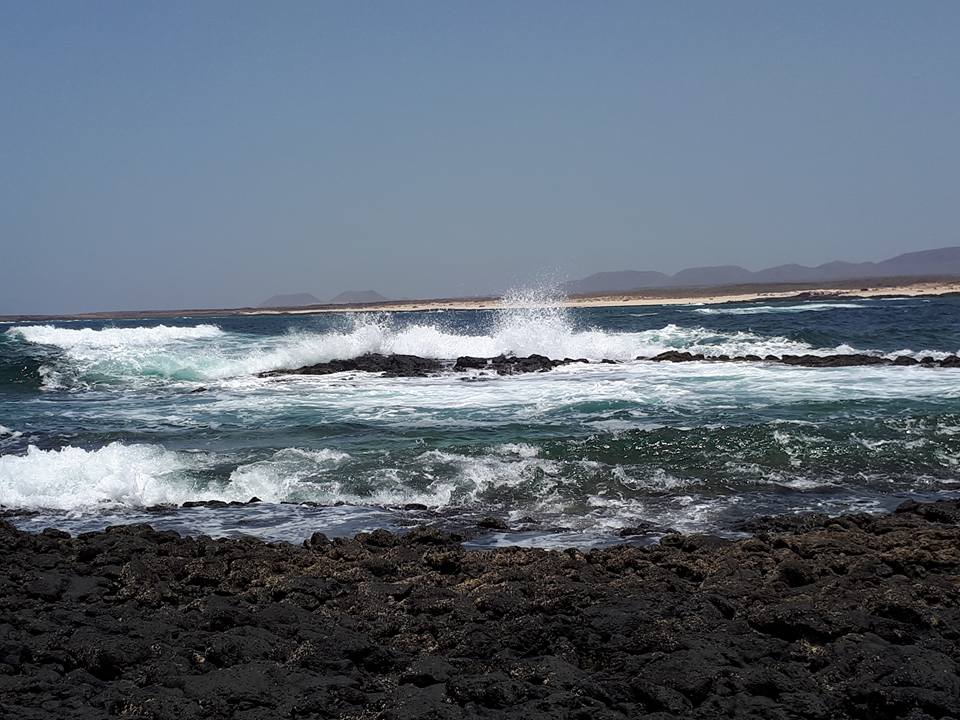
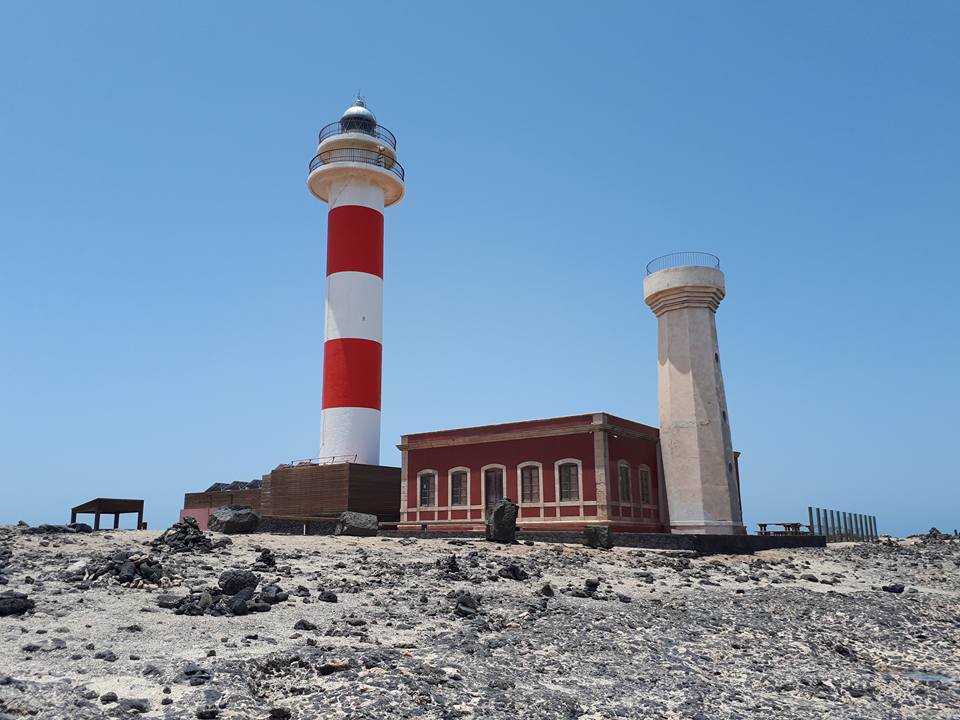
Las Salinas del Carmen
On the coast, a stone’s throw away from the resort of Caleta de Fuste is a Salt Museum. It’s a living museum which takes you through the benefits of salt, as well as the process from extraction to making the salt ready for consumption. Outside you’ll see the actual salt pans.
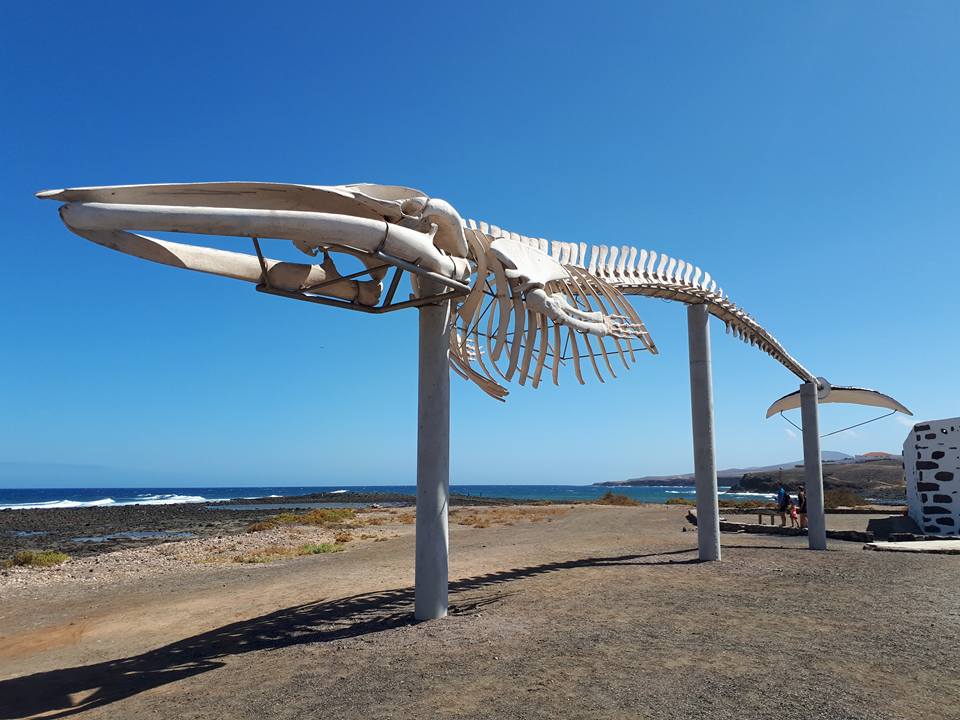
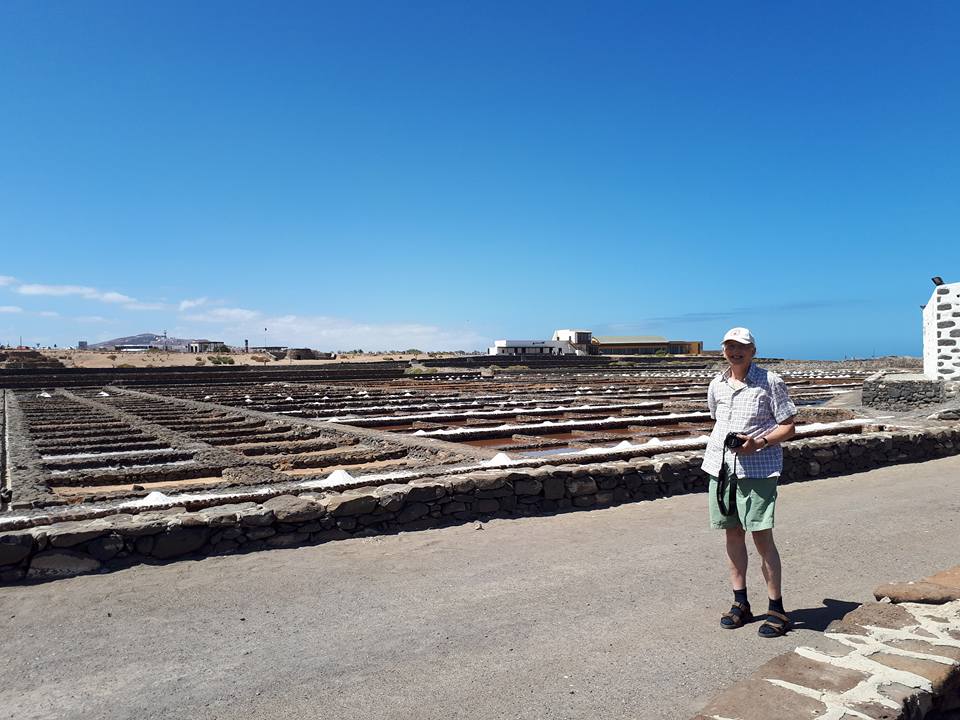
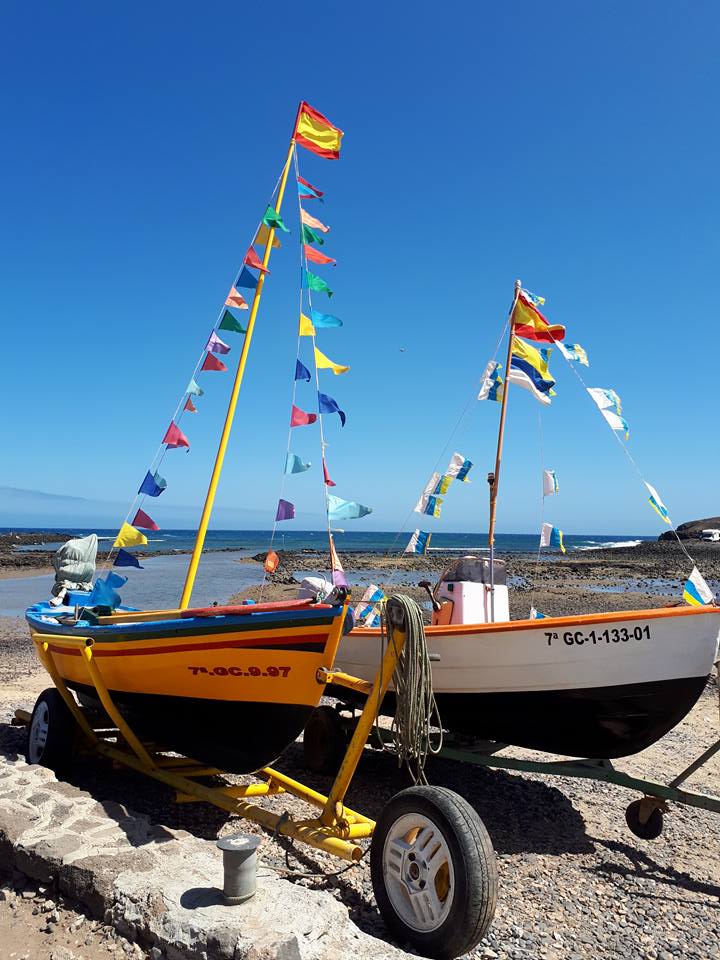
El Molino at Tiscamanita
Another museum: this time taking you through the process of how real Canary Island ‘gofio’ (flour) is made and the history of the windmill. We enjoyed this place so much we went twice! Once in the first week, and once again to bring Chanae in the second week.

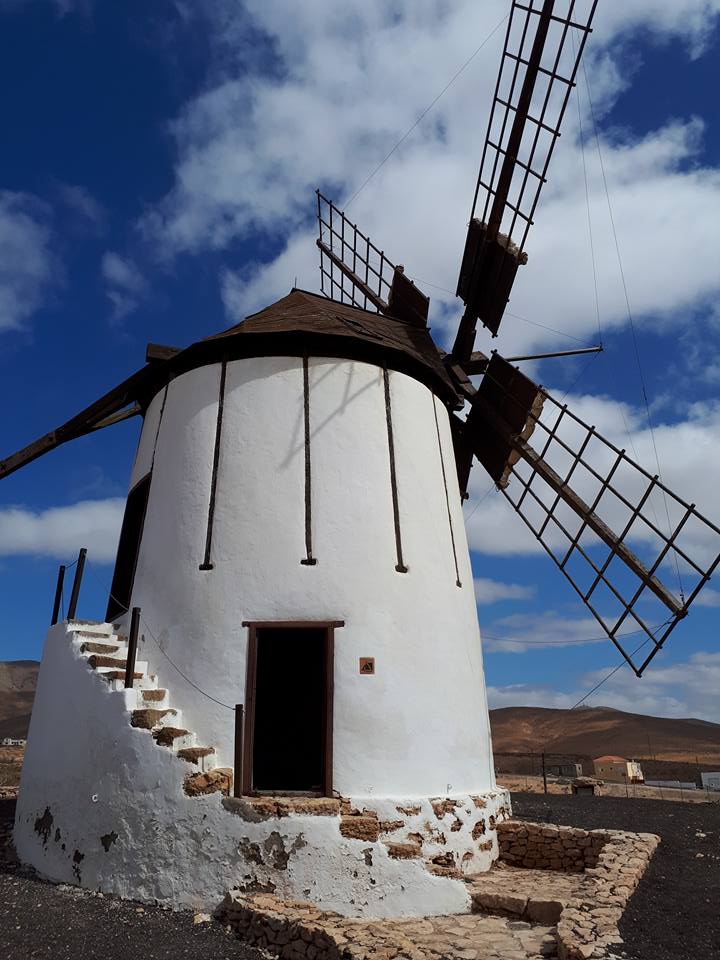
Corralejo
At the very top of Fuerteventura, you can see the Isla de Lobos and on a clear day, Lanzarote.
Corralejo town has a typical tourist strip with shops, bars and restaurants. It’s one of the largest resorts on the island. On the outskirts you have the Natural Park and sand dunes for miles. When you drive along the FV-104 the sand is already creeping over the tarmac. I’m not sure if you can now, but we parked (legally) on the side of the road and played in the dunes. You have the sea, the sand and the volcanoes in the distance. Picture perfect and so much fun!
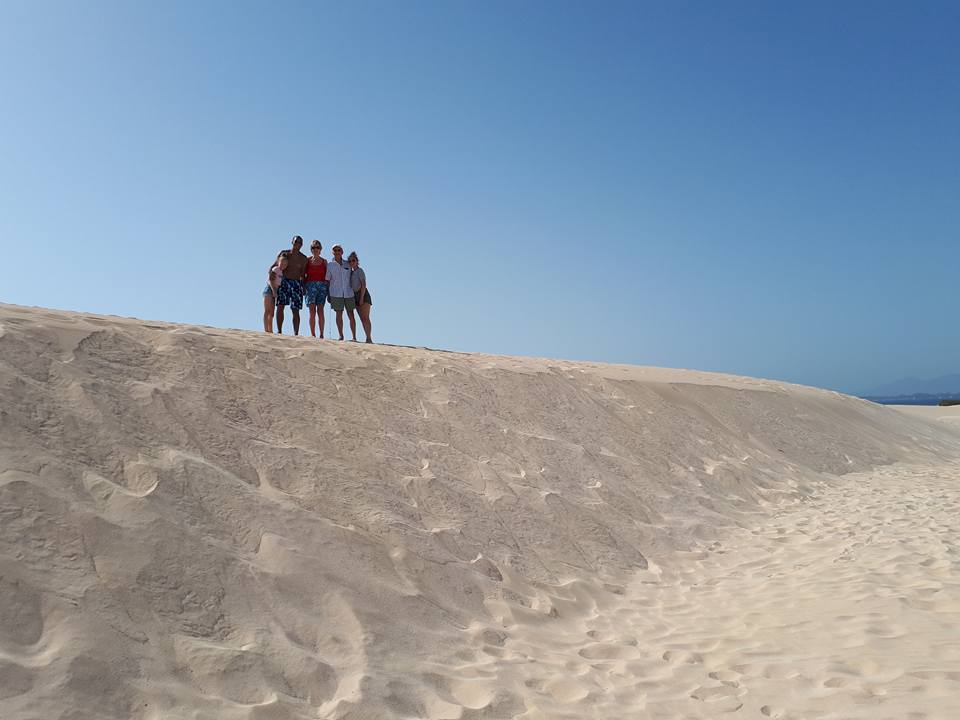
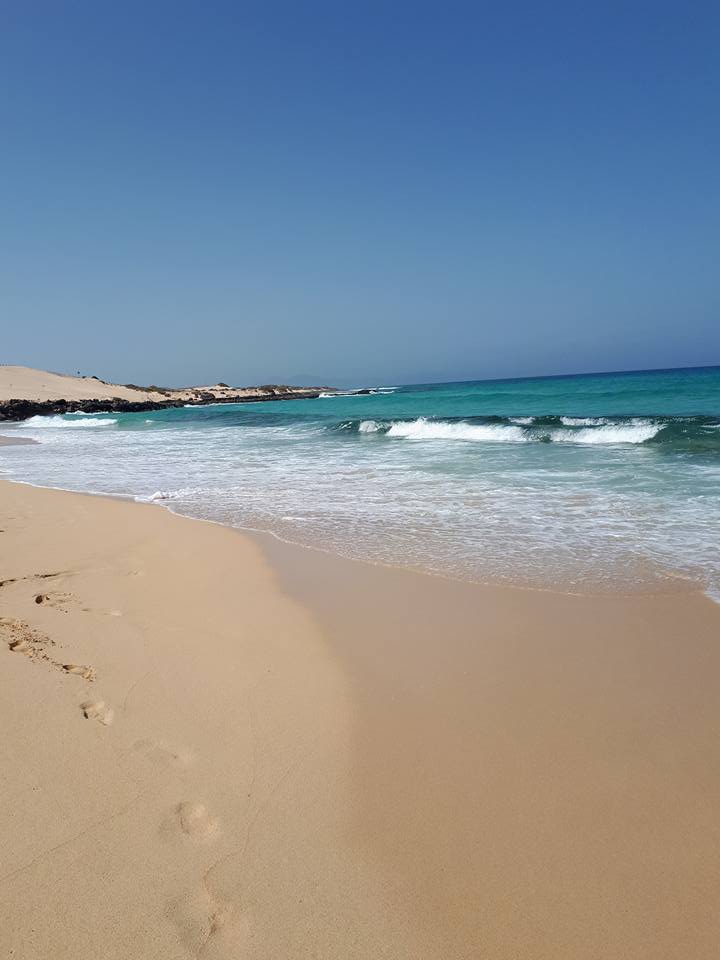
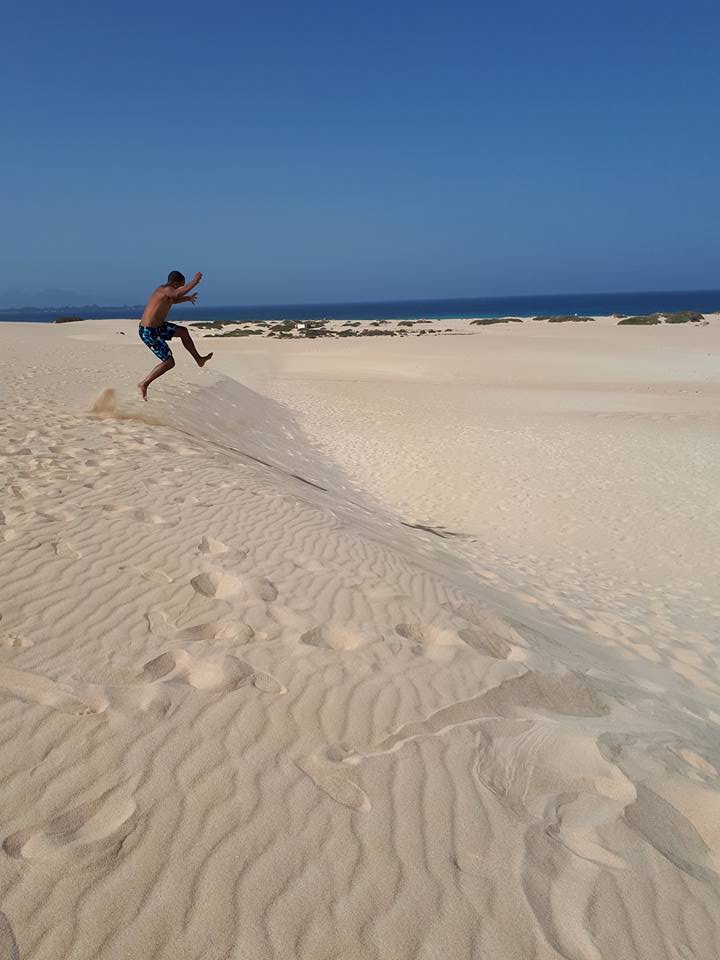
Playa de Sotavento
At the opposite end of the island is an approximate nine kilometre stretch of beach. Playa de Sotavento is located between Costa Calma and Morro Jable. Shortly after high tide, you have the lagoons and sand banks, and at low tide, the beach seems as wide as it is long (if you’re trying to reach to ocean, it’s a bit of a walk!) It’s paradise on earth.
There are plenty of places to grab a drink or a bite to eat, while watching the tide change in front of your eyes.
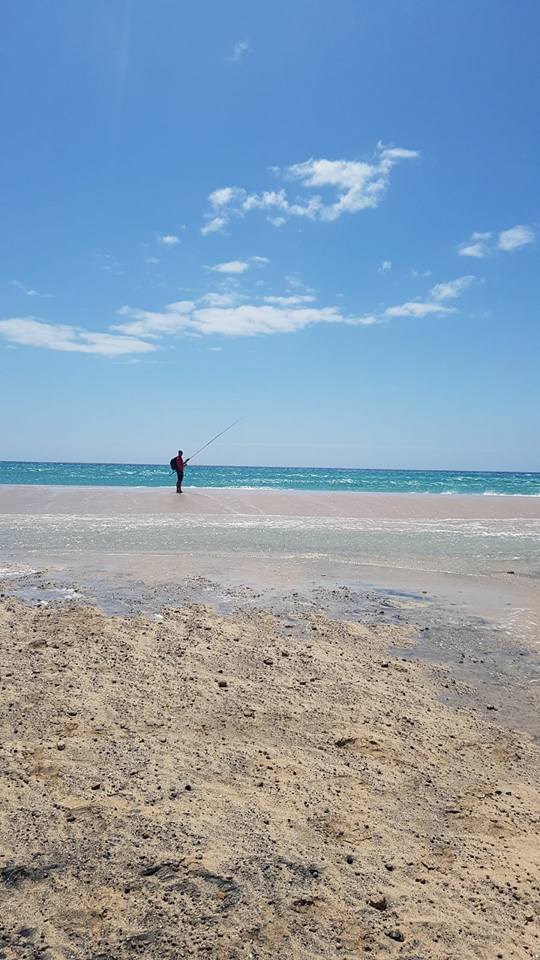
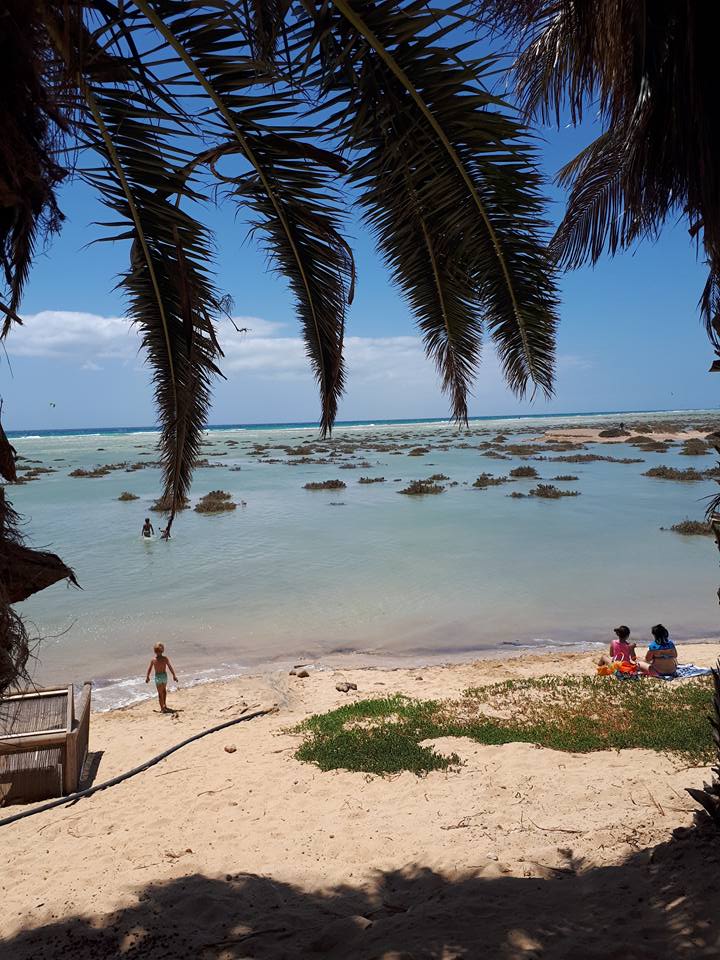
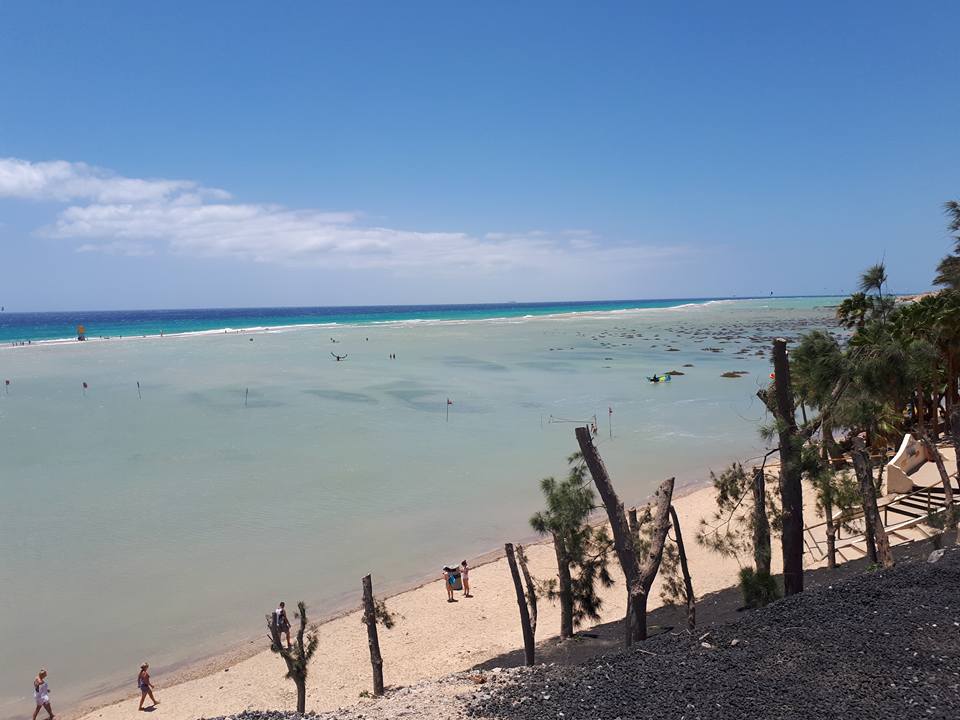
Oasis Wildlife Park and Botanical Gardens
Situated in La Lajita, it’s worth spending a day here to get the most out of the park and the gardens.
Set in a natural landscape, the wildlife park has more than 250 types of animals including giraffes, camels, hippos, zebras, elephants, crocodiles, alligators, monkeys, emus and birds.
There are shows throughout the day with sea lions, reptiles, parrots and birds of prey.
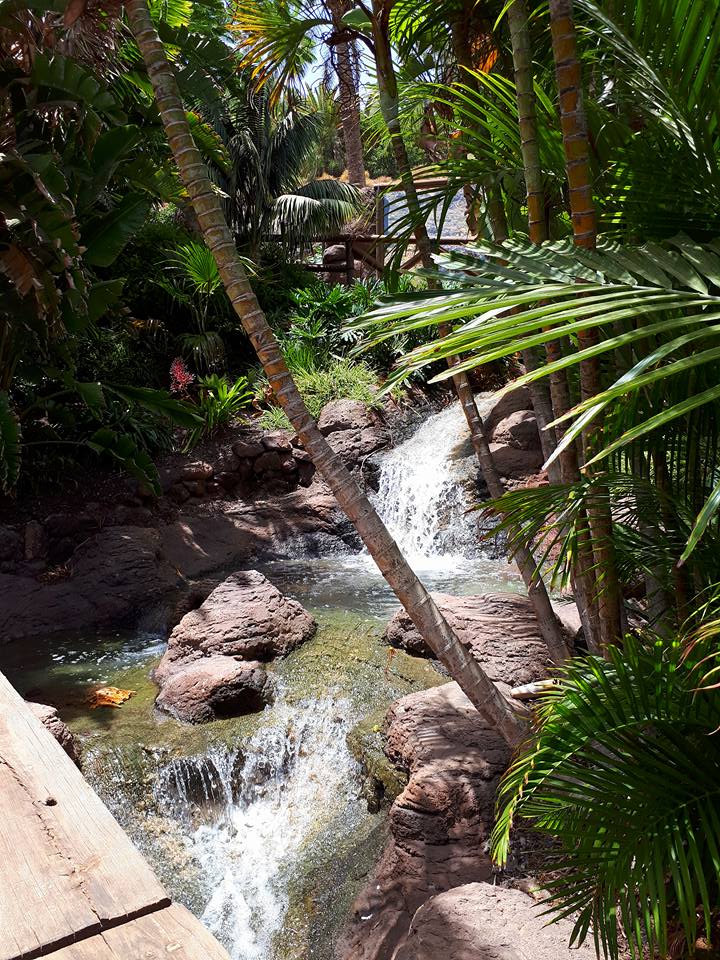
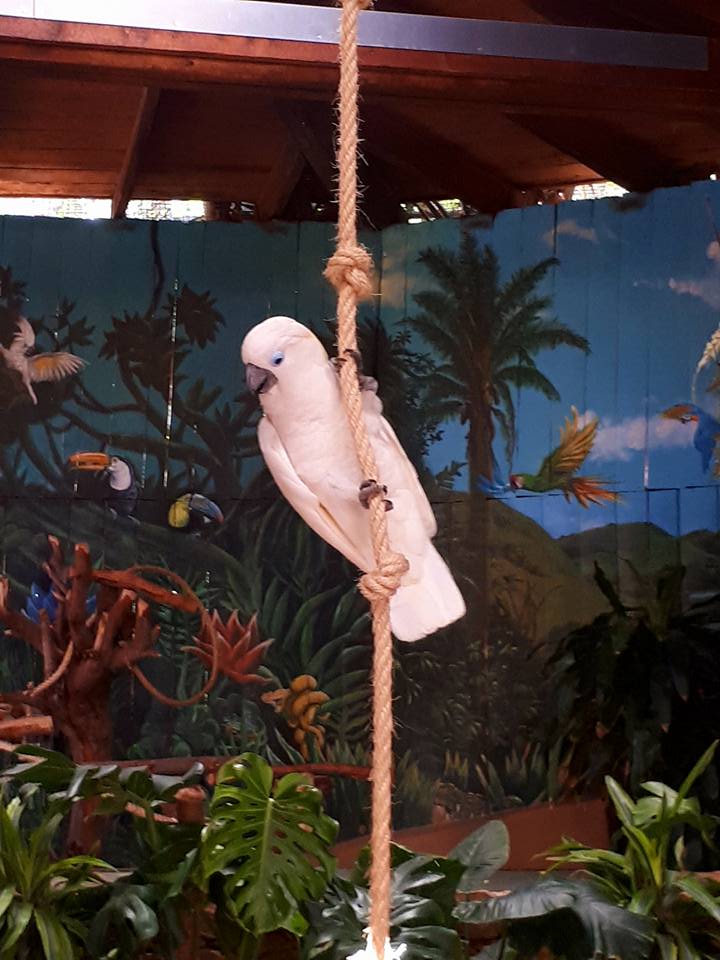
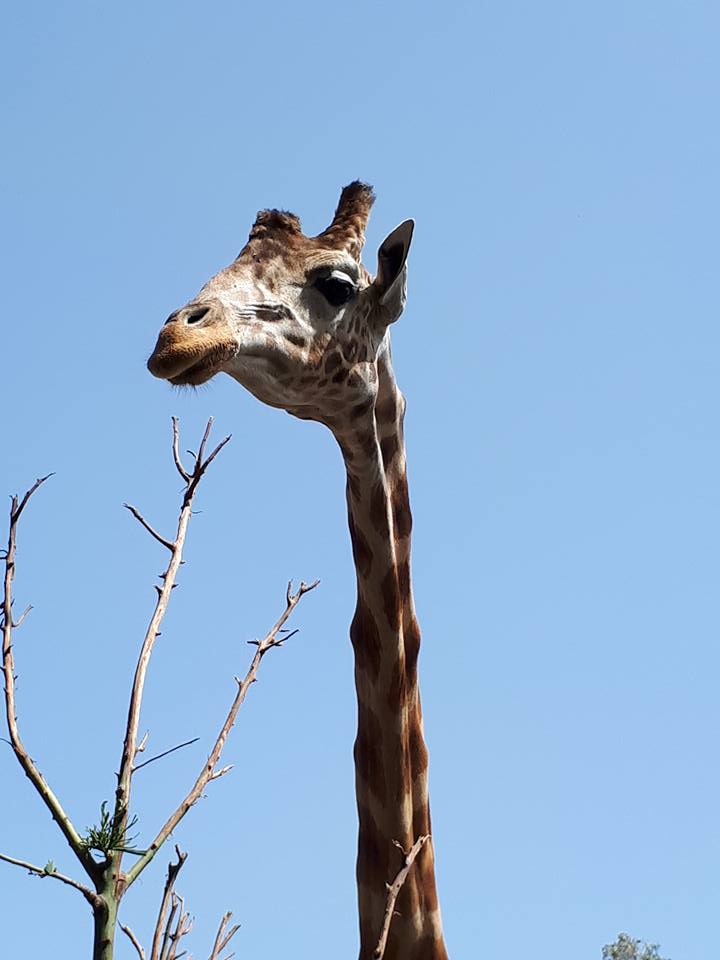
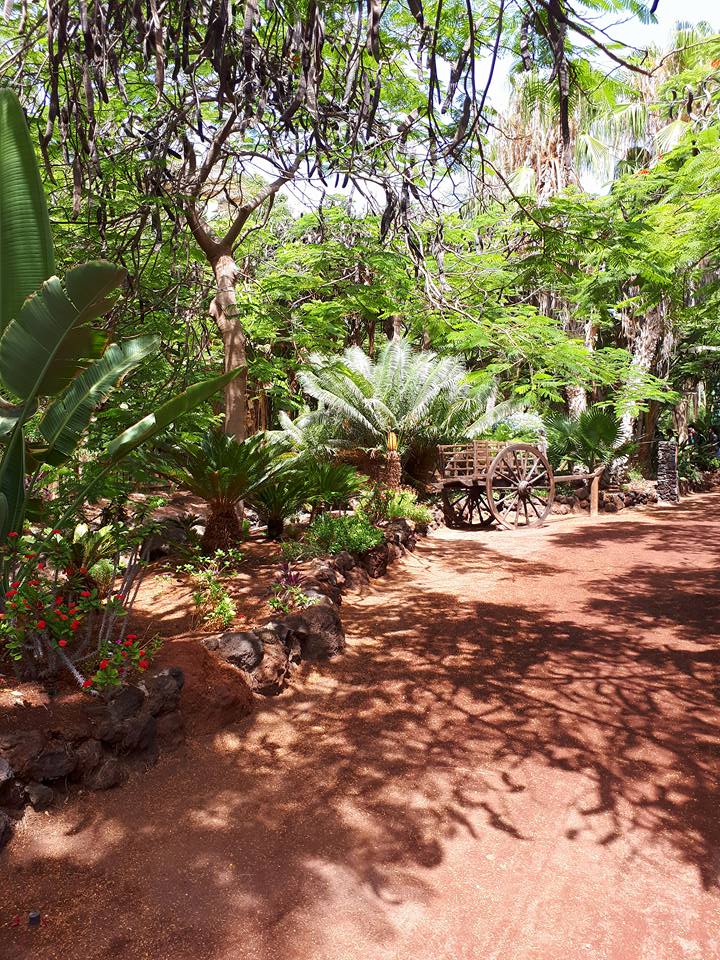
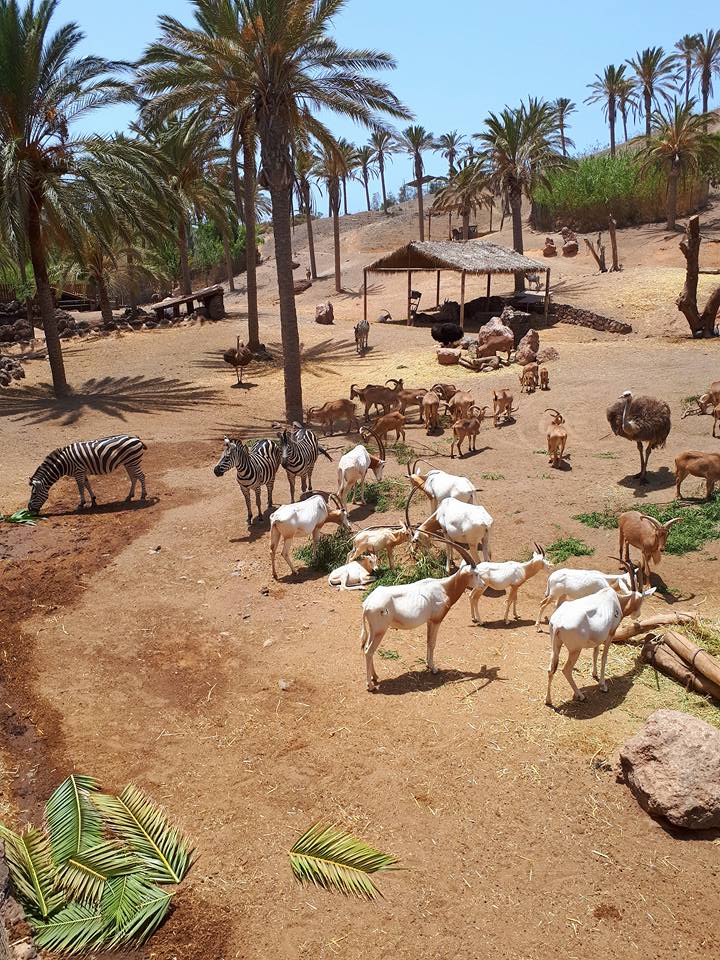
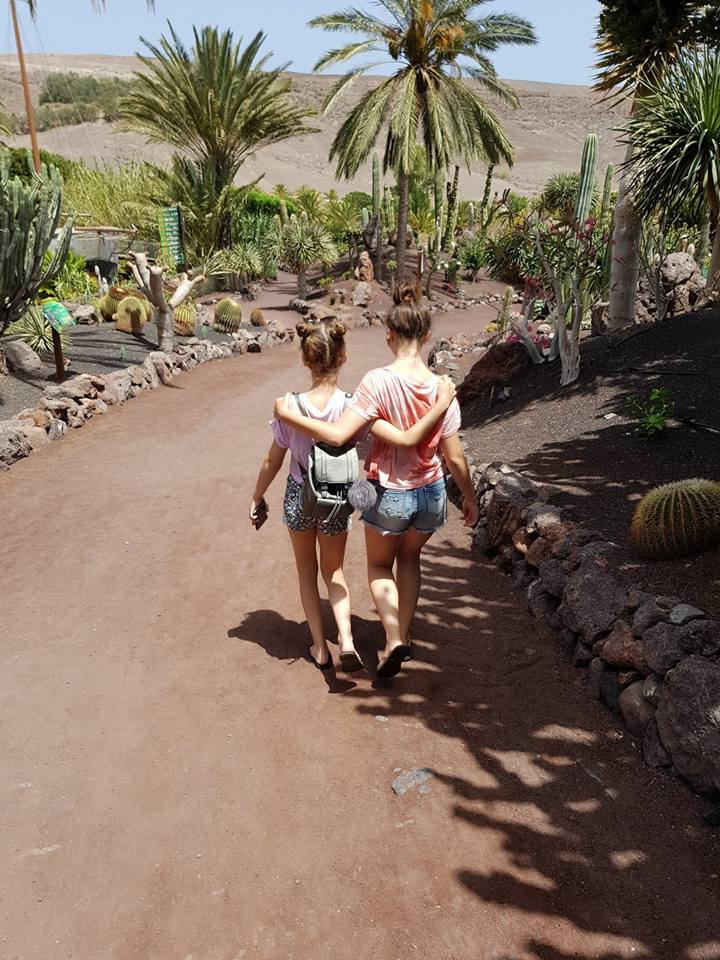
The Botanical Gardens are beautiful. Of the approximate 750 plant species recorded for Fuerteventura, half are native to the island and of these, 15 are exclusive to it, and not found anywhere else in the world.
It’s an incredible place to explore at a leisurely pace. There is plenty of tree coverage, as well as open spaces to enjoy the view and landscape.
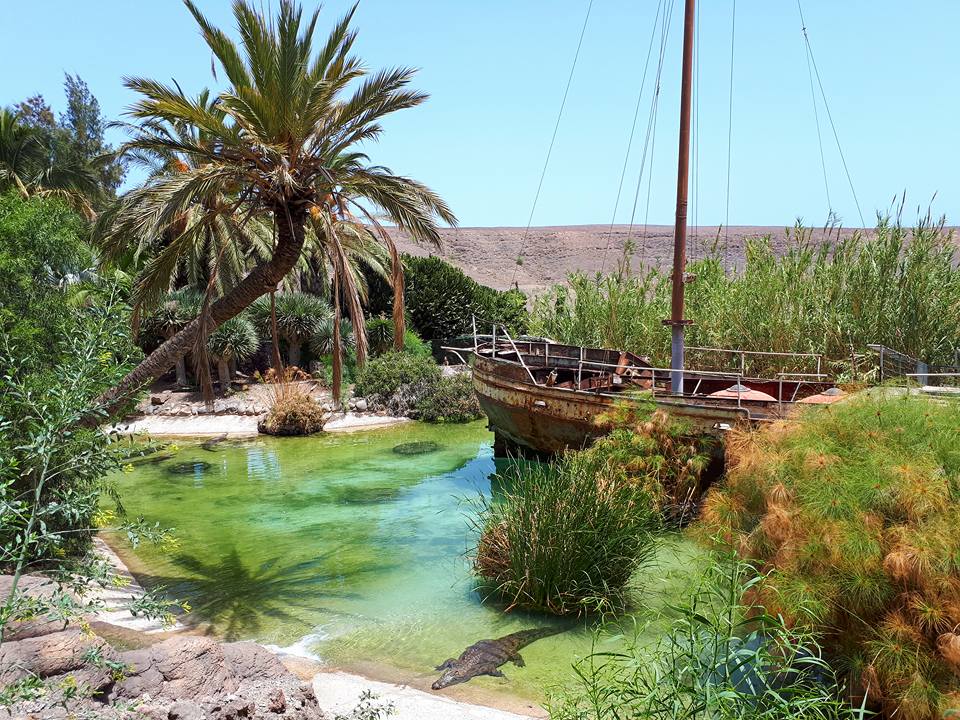
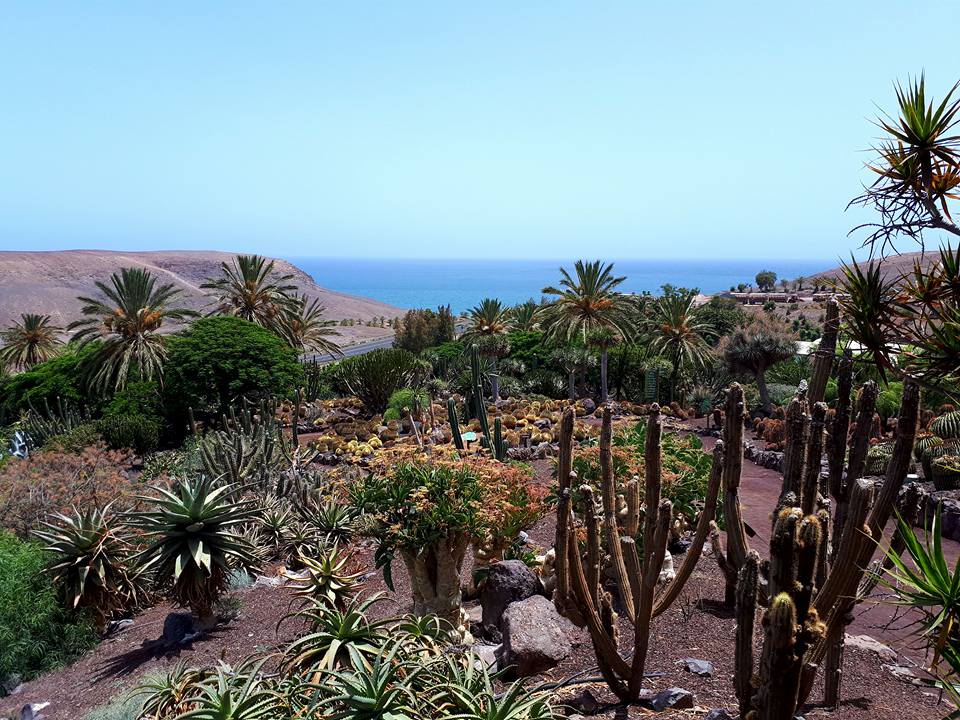
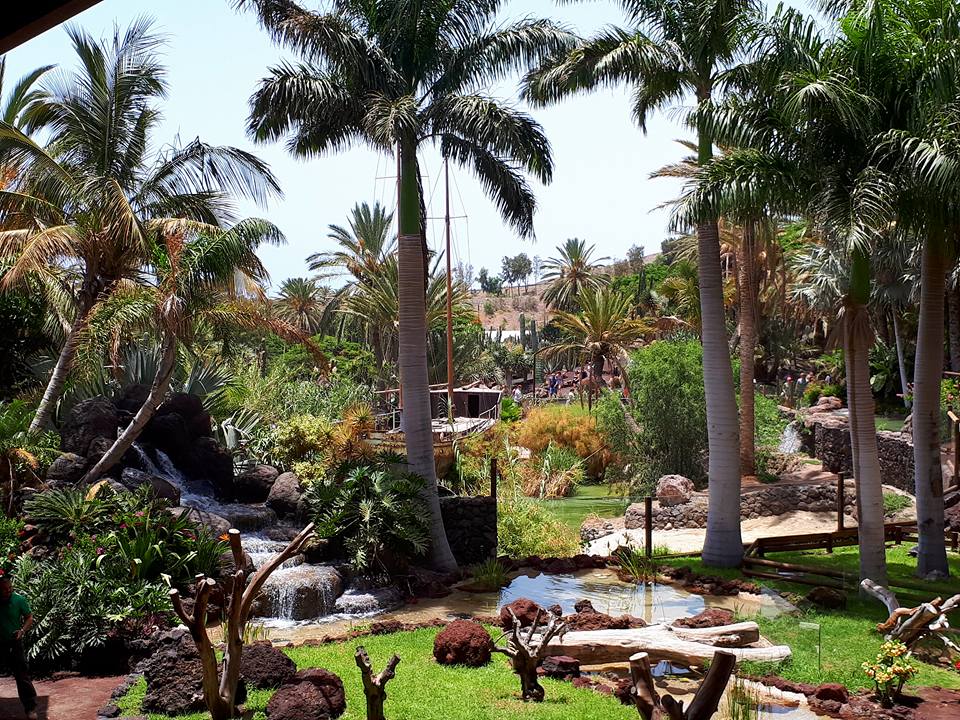
Caleta de Fuste
As a base, Caleta de Fuste has everything you need. A beach and a small marina. Holiday villages, hotels and holiday rentals. A bus stop, taxis, plenty of shops, banks / ATMs, cafes, bars, pubs and supermarkets. Places to dance the night away and a romantic promenade along the coast.
The beach is in a protected cove, which means it’s perfect for swimming and bathing, especially for families with small children. It’s much safer as the waters are calmer than at some of the other beaches around the island.
If you bring nothing with you at all on your holiday, not even a suitcase – you’ll be able to buy it here! Of course, with slightly inflated pricing. You’ll need to head out of the tourist resort and into the local towns and villages if you want to want your money to go further, especially for a weekly food shop.
By the marina, you will find the usual excursion stands for full day, half day, 1–2hour trips to all over the island, as well as car (and other vehicle / equipment) hire. There are boat tours galore, a scuba diving centre and a small sea life centre.
I’m actually getting a bit ‘home-sick’ reading this blog back to me. I genuinely love Fuerteventura, no matter how much it changes. It will always have a very special place in my heart, and I hope to holiday here again soon.
I don’t think I’ll ever stay in a hotel on the island though. I have become too used to the freedom of self-catering here. Making dinner while you’re still not completely dry from that last swim, listening to your own sounds, surrounded by your people, is my kind of holiday.
helpful website links
oasiswildlifefuerteventura.com
For my self catering packing list, click here
Please note that this page contains affiliate links, which means we may receive a small commission if you buy an item using the link. You won’t pay any more for the item than you usually would do.
